CALABARZON Travel Guide: Cavite, Laguna, Batangas, Rizal and Quezon Top Attractions
Popular tourist attractions in calabarzon.
- shares
- Share on Facebook
- Share on Twitter

CALABARZON Travel Guide: Where to go When You Visit the Five Provinces
Table of Contents
C alabarzon used to be called Southern Tagalog Mainland in the Philippines and was under Region IV-A. The provinces that make up the cluster are Cavite, Laguna, Batangas, Rizal, and Quezon. It’s the most populated region of the country after Metro Manila.
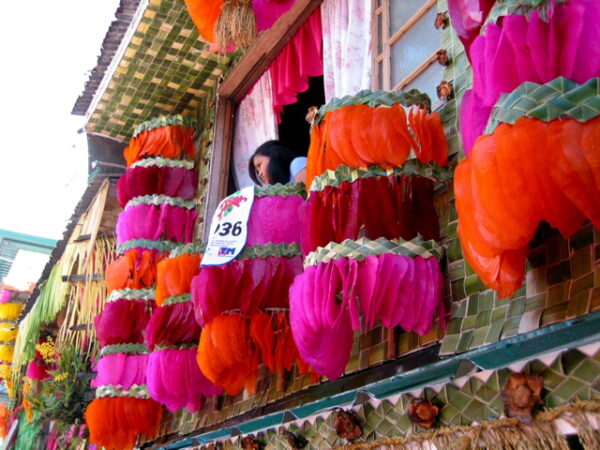
It’s located south of the National Capital Region (NCR). These 5 provinces of Calabarzon are where you can find some of the most stunning natural attractions in the Philippines, including mountains, volcanoes, hot springs, beaches, lakes, and many more.
City dwellers visit these places regularly because of their proximity to Manila, especially during the summer when it’s scorching hot. Everyone just wants to go away for a few days.
Here is a list of the attractions you can visit in the five provinces of Calabarzon.
Emilio Aguinaldo Shrine

This South Luzon province is where the Emilio Aguinaldo Shrine can be found. This is the place where the Philippines declared its independence from Spanish Colonization took place. Both the natural beauty and man-made attractions of Cavite attract tourists.
Corregidor Island

Corregidor Island can be found in Cavite. It’s located at the entrance of Manila Bay and served as a military bastion. Its ruins can be seen up to this day. History says that this island was where they put coastal artillery to fight the warships trying to enter the Philippines through Manila Bay.
This tour gives an in-depth learning experience for those who wish to know about the history of the Philippines in that area.
Mt. Palay-Palay

This dormant volcano, which stands at 688 m (2,257 ft) above mean sea level, used to be called Pico de Loro because it has a monolith with the shape of a parrot’s beak. Many groups are offering guided tours of the mountain. Both beginners and advanced mountain climbers will enjoy the views of open waters and mountains nearby.
The province of Laguna is most known for being the birthplace of Rizal, but other than that, the place is endowed with several bodies of nature, eco-tourism spots, and health and wellness establishments.
Enchanted Kingdom

EK is an old favorite, and even if it’s not as popular as before, this theme park makes everyone happy with its numerous rides like Up, Up, and Away which looks like you’re riding a hot air balloon; Xtreme Paintball Philippines and Rio Grande Rapids. The amusement park also has shopping facilities, dining stalls, shows, and entertainment venues.

The town of Paete is mainly visited because of its woodwork, but more than that, you can embark on gastronomic adventures by trying their local puto bumbong. There’s an old church in Paete with the same name that maintained its glory through the years.
The façade is made of complicated stone works, and upon entering, you’ll be greeted with red stone flooring and a dark wooden ceiling. There are several small statues of Saints and a bell tower.

Batangas is known for its beaches, Kapeng Barako, Tablea, balisong, and many more. Verde Island Passage can also be found in Batangas. This is the center of the world’s marine biodiversity.
The water activities of Batangas are also being visited by many tourists around the country. Aside from its natural attractions and products, Batangas wows many with its special version of Bulalo.
Anilao Diving Sites

The nearness of Anilao to Manila makes this beach a go-to for diving enthusiasts. The marine life of Anilao is diverse and really colorful. There are resorts where accredited dive masters are ready to give lectures to willing guests.
Also Read: Best Beach and Dive Resorts in Anilao, Batangas
Taal Heritage Town

Taal’s ancient town is where the well-preserved heritage houses and other establishments of the rich and famous people of a bygone era are located. There’s a park in the town called Taal Park where Basilica de San Martin de Tours stands.
Modern times have paved the way for shops like convenience stores, but this quaint place’s charm remains. You can also go on a walking tour around the area to buy embroidered piña fabrics as pasalubongs.
Also Read: Top 12 Things to do and Places to Visit in Taal, Batangas .
Padre Pio National Shrine

Padre Pio Shrine is famous for having stigmata, which became stir controversy and interest. The shrine in Batangas is built in his honor. Many flocks to the church to offer their thanks and, most of all, to pray for the things they wish for.
Everyone can go to the 14 Stations or hang their handkerchiefs and wish for something they genuinely want. There’s also a tiny shrine of Padre Pio, and visitors can climb the bell tower.
Rizal is a mountainous province in the Philippines located east of Manila. The highest points of Rizal offer a fantastic view of Manila’s business districts and Laguna de Bay at the Southeastern horizon of the province.
Rizal doesn’t have beaches, but the province has waterfalls, caves, and streams of water. Its location is not that far from Manila, so it’s easy to reach but far enough to enjoy peace and quiet.
Daranak Falls

Daranak falls is already a popular tourist spot in Tanay because of its green waters and lush backdrop. You’ll have to take a hike to reach this special place.
It isn’t a huge waterfall, but its allure comes from the beginning of the hike to the cute rock formations and of course, the stunning falls as the main event.
Pililla Wind Farms

Not as towering as the ones in Bangui, but the windmills of Pililla have their own appeal since it’s standing on top of the hills with a stunning view of Laguna de Bay.
The strong winds of Pililla make it the perfect spot for these wind turbines, which is responsible for about 150 Gigawatt hours of electricity each year.
The farthest province from Manila is also where some of the most amazing beaches, colorful festivals, delicious foods, mountains, churches, and heritage houses can be found. It’s a large province and can be reached from Manila in 4 hours or more.
Agawan Festival

The yearly festival celebrates Saint Isidore the Laborer, the patron saint of farmers and lover of the poor and animals. The locals put ‘pabitins’ or hang treats outside their houses where members of the parade and other crowds will try to take their pabitins, then the other members of the households will throw leafy foods outside. They celebrate this festival as a way to liberate their souls.
Foodie Tour

The foods of Quezon are famous for their unique tastes. Lucban longganisa isn’t your typical sweet Filipino sausage; its taste falls on the garlicky and salty side.
Quezon also has its own version of pancit, pancit habhab, a type of Miki noodles cooked with sayote, pork meat, soy sauce, and vinegar. Aside from these two, hardinera, Budin, and yema cake are the foods you should try when you visit.
Cagbalete Island

White sand, turquoise waters, and calm waters that’s the promise of spending a day or two on Cagbalete Island in Mauban Quezon .
It’s a serene place with only a few locals that you can enjoy. You can go swimming, beach bumming, or strolling as much as you can. Some accommodations are available, but it’s still limited.
Want more updates about new package tours and tourist spots in CALABARZON? Follow #TeamOutofTown, on Facebook , Twitter , Instagram , Bloglovin, and Pinterest for more travel ideas.
- Fortune Island Travel Guide
- Top Eight Places You Must Visit In Antipolo
- Best Things to do in Vigan
- Cagayan Province Travel Guide
- Manila Itinerary: Exploring Manila in One Day
Written by Melo Villareal
Melo Villareal is the Online Publisher of Outoftownblog.com. He is an Accountant by profession who left the corporate world at the age of 23 to explore his beautiful country and the rest of the world. Today, Melo works as a part-time Social Media Manager for local and international clients. His full-time work focuses on discovering interesting culture, explore different cuisines and take memorable photos from local and international destinations he's visiting.
What do you think?

Top 15 Best Things to do in Ibiza, Spain

Kitsho Restaurant and Sake Bar preps up for the holiday season
© 2024 by Team Out of Town
With social network:
Or with username:.
Username or Email Address
Remember Me
Forgot password?
Enter your account data and we will send you a link to reset your password.
Your password reset link appears to be invalid or expired.
Privacy policy.
To use social login you have to agree with the storage and handling of your data by this website. Privacy Policy
Add to Collection
Public collection title
Private collection title
No Collections
Here you'll find all collections you've created before.
Insight Tribune
Ignite Your Mind and Illuminate Your World
Exploring the Rich Cultural Heritage of Region 4A: A Journey Through Its Historical Sites and Traditions

Located in the southern Tagalog region of the Philippines, Region 4A boasts a rich cultural heritage that reflects its diverse history. From its pre-colonial roots to its Spanish and American colonial periods, the region’s history is deeply intertwined with its culture and traditions. In this article, we will take a journey through some of the most historically significant sites and traditions of Region 4A.
Pre-colonial Roots
Before the arrival of the Spanish colonizers in the Philippines, Region 4A was home to various indigenous people, including the Tagalog, Bicolano, and Visayan tribes, among others. The region’s indigenous culture can be observed in the numerous historical sites and traditions that have been preserved over the centuries.
One of the most significant pre-colonial sites in Region 4A is the Mabitac Archaeological Site in Laguna. This site contains artifacts dating back to the 14th century, including pottery, tools, and jewelry. The site offers a glimpse into the pre-colonial lifestyle and traditions of the indigenous people who once inhabited the region.
Spanish Colonial Period
The Spanish colonial period in the Philippines lasted for over three hundred years, from the 16th to the 19th century. During this time, the Spanish colonizers introduced their culture and traditions to the indigenous people, resulting in a fusion of indigenous and Spanish culture that is still evident in the region today.
One of the most prominent examples of this fusion is the Baroque-style architecture that can be seen in numerous churches and other historical sites throughout Region 4A. The most notable of these is the Pila Church in Laguna, which was built in 1578 and is the oldest known church in the Philippines.
American Colonial Period
The American colonial period in the Philippines lasted from 1898 to 1946 and left a significant impact on the region’s culture and traditions. During this time, the Americans introduced modern technology, education, and infrastructure, which led to significant changes in the region’s social and economic landscape.
One of the most notable sites from this period is the Fort San Felipe in Cavite, which was built by the Spanish in the 1600s and later used by the Americans as a military base. Today, the fort serves as a museum that showcases the region’s colonial history and American influence.
Traditional Festivals
Aside from its historical sites, Region 4A is also home to numerous traditional festivals that reflect the region’s rich cultural heritage. One of the most popular of these is the Pahiyas Festival in Lucban, Quezon, which is celebrated every May 15th in honor of San Isidro Labrador, the patron saint of farmers.
During the festival, the streets of Lucban are adorned with colorful kiping (rice wafers) and other agricultural products, as well as elaborate decorations made from fruits, vegetables, and flowers. The festival is a celebration of thanksgiving for abundant harvests, and is a testament to the region’s agricultural roots.
Region 4A is a treasure trove of historical sites and traditions that reflect the region’s rich cultural heritage. From its pre-colonial roots to its colonial past and modern-day celebrations, the region offers a glimpse into the country’s complex and fascinating history. Whether you’re a history buff, a culture enthusiast, or simply curious about the Philippines, Region 4A is definitely worth exploring.
Leave a Reply Cancel reply
Your email address will not be published. Required fields are marked *
Save my name, email, and website in this browser for the next time I comment.
Related Posts

- Explorations
The Importance of Proper Dental Care During February Health Awareness Month
- Aiden Scholar
- June 14, 2023
february is an important month as it's the national children’s dental health month, a time…

Unlocking the Benefits of Artificial Intelligence for Your Business
- June 17, 2023
artificial intelligence (ai) and machine learning (ml) technologies are revolutionizing the way businesses operate, bringing…

Exploring the Wonders of India Cultural Center & Temple Inc
- June 12, 2023
india has always been a land of diverse cultures and profound beliefs. its rich heritage…

What are the Top 10 Questions About E-Commerce PDF Answered?
- June 15, 2023
introduction in today's world, e-commerce has become a critical component for businesses to reach potential…
Knowledge and Science Bulletin Board System
Exploring the World of Knowledge and Understanding
Exploring the Rich Cultural Heritage of Region 4A: A Must-Visit Destination for Tourists
By knbbs-sharer.
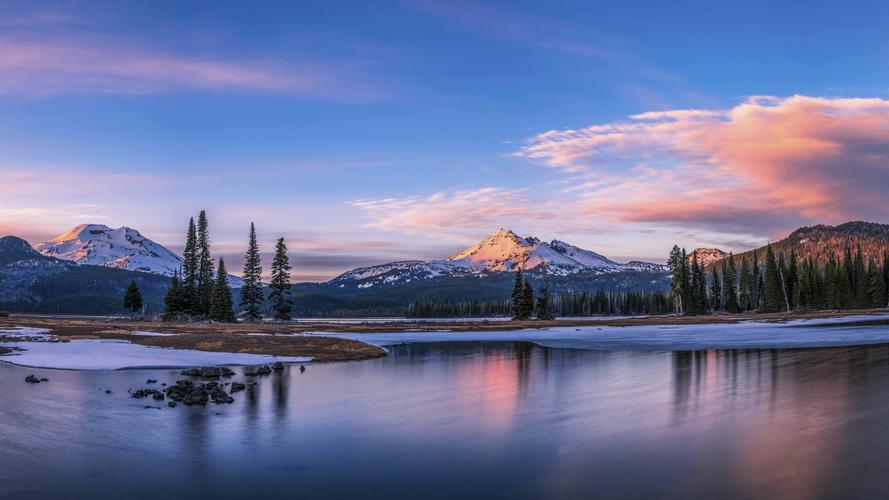
Region 4A, also known as CALABARZON, is a southern region in the Philippines that boasts a rich cultural heritage. With its beautiful landscapes, historical architecture, and diverse customs, this region is a must-visit destination for tourists looking to immerse themselves in the country’s rich history and culture.
One of the most well-known destinations in Region 4A is the city of Tagaytay. The city is home to Taal Volcano, one of the most active volcanoes in the Philippines, and the Taal Heritage Town, where visitors can witness Spanish-era architecture and learn about the city’s history.
Another popular destination in the region is the province of Laguna, which is known for its hot springs and natural beauty. Visitors can explore the Pagsanjan Falls, a popular attraction that offers exciting and scenic boat rides, or visit the historic town of Pila, which is home to many sixteenth-century houses and buildings.
Additionally, the region is home to a number of cultural and historical sites. The city of Cavite, for example, is known for its revolutionary history, while the Rizal Shrine in Calamba serves as a tribute to the Philippine National Hero, Jose Rizal.
When it comes to food, Region 4A has a lot to offer as well. The region is known for its rich cuisine, which features a blend of local and international flavors. Popular dishes include bulalo, a beef soup made with marrow bones, and tawilis, a type of freshwater fish that is only found in the region.
Overall, Region 4A is an ideal destination for tourists looking to explore the Philippines’ rich culture and history. With its beautiful landscapes, historical landmarks, and delicious cuisine, visitors are sure to have a memorable experience that they won’t soon forget.
(Note: Do you have knowledge or insights to share? Unlock new opportunities and expand your reach by joining our authors team. Click Registration to join us and share your expertise with our readers.)
Share this:
Discovery new post:.
- 5 Must-See Destinations for Discovering the Cultural Heritage of France
- Exploring Victoria’s Rich Cultural Heritage: A Journey Through Time
- Exploring the Treasures of Cultural Heritage in Region 1: A Comprehensive Guide
- Discovering the Wonders of Southeast Asia: A Journey Through Thailand, Cambodia, and Vietnam
Hi, I'm Happy Sharer and I love sharing interesting and useful knowledge with others. I have a passion for learning and enjoy explaining complex concepts in a simple way.
Related Post
Unveiling the vibrant culture: an immersive experience at the polynesian cultural center, unveiling the vibrant culture: a 7-dimensional experience at polynesian cultural center, revolutionizing cell culture: a step-by-step guide to x-gal staining protocol for unveiling cultural secrets, leave a reply cancel reply.
Your email address will not be published. Required fields are marked *
Save my name, email, and website in this browser for the next time I comment.
Notify me of follow-up comments by email.
Notify me of new posts by email.
Tech Revolution: How Invoice Payment Info Is Securely Transformed in the Digital Age
Decoding knowledge: unraveling the mysterious z code of malingering – a comprehensive guide, unlocking mental wellness: top 5 innovative adult mental health services for a healthier you.
THE 10 BEST Calabarzon Region Parks & Nature Attractions
Nature & parks in calabarzon region.
- Bodies of Water
- 5.0 of 5 bubbles
- 4.0 of 5 bubbles & up
- 3.0 of 5 bubbles & up
- Good for Big Groups
- Budget-friendly
- Good for Kids
- Good for Adrenaline Seekers
- Good for Couples
- Adventurous
- Hidden Gems
- Honeymoon spot
- Good for a Rainy Day
- Things to do ranked using Tripadvisor data including reviews, ratings, photos, and popularity.
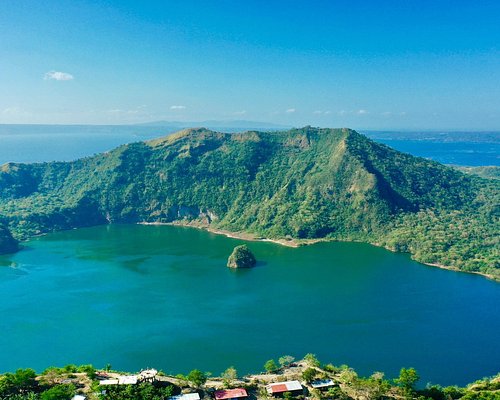
1. Taal Volcano

2. Masungi Georeserve

Recommended Outdoor Activities (38)

3. Pagsanjan Falls
4. Picnic Grove
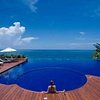
5. Peoples Park In The Sky

6. Mount Daraitan & Tinipak River
7. Hidden Valley Springs

8. Avilon Zoo
9. Lake Taal

10. Cagbalete Island

11. Masasa Beach
12. Sampaloc Lake

13. Mount Purro Nature Reserve
14. Taytay Falls

15. Lake Pandin

16. Mt Pico de Loro
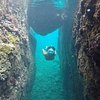
17. Mt. Batulao
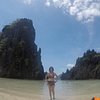
18. Hinulugang Taktak
19. Daranak Falls
20. Playa Laiya
21. Lakes Pandin
22. Alibijaban Island
23. Paradizoo
24. Mount Makiling
25. Batlag Falls
26. Splash Island
27. Hulugan Falls
28. Calinawan Cave

29. Bangkong Kahoy Valley

30. Fortune Island
What travelers are saying


- VIGATTINDEALS
- VIGATTININSURANCE
- VIGATTINTRADE
- OTHER SITES
- DESTINATIONS
- TOURIST SPOTS
- RESTAURANTS
- FLORA AND FAUNA
- SPORTS AND RECREATION
- TOP 10 LIST
- TOURIST ATTRACTIONS
- VIGATTIN RADIO
- WELLNESS AND BEAUTY
- All Article
- Trending Articles

CALABARZON (Region IV-A Profile)
CALABARZON is one of the regions of the Philippines. It is designated as Region IV-A and its regional center is Calamba City in Laguna. The region is composed of five provinces, namely: Cavite, Laguna, Batangas, Rizal, and Quezon; the region's name is formed from the names of these provinces. The region is also more formally known as Southern Tagalog Mainland.
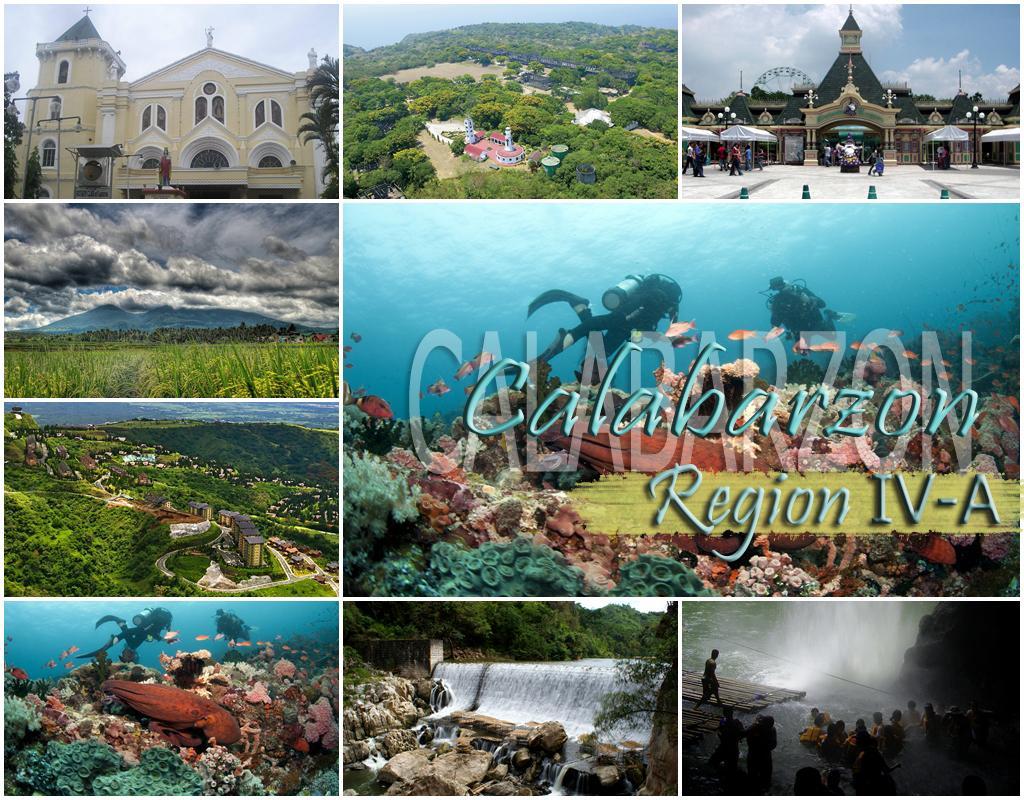
The region is in southwestern Luzon, just south and east of Metro Manila and is the second most densely populated region. CALABARZON and MIMAROPA were previously combined together as Southern Tagalog, until they were separated in 2002.
Executive Order No. 246, dated October 28, 2003, designated Calamba City as the regional center of CALABARZON. The largest city of CALABARZON Region and the second highly-urbanized city is Antipolo City. Lucena City is the first highly-urbanized city in this region.
CALABARZON is the most populated region in the Philippines, with a population of 12,609,803 inhabitants.
A number of notable events in the history of the Philippines took place in Region IV-A. People from Batangas, Cavite and Laguna were a part of those who first revolted against the Spaniards for freedom. While the Philippines' national hero, Dr. Jose P. Rizal, his brother, Paciano Rizal and Vicente Lim are also born in Calamba City. Apolinario Mabini was born in Tanauan City, Batangas.
The eight primary rays of the sun found in the Philippine Flag represent the first eight provinces (Batangas, Bulacan, Cavite, Laguna, Manila, Nueva Ecija, Pampanga, and Tarlac) that sought independence from Spain and were placed under martial law by the Spaniards at the start of the Philippine Revolution in 1896.
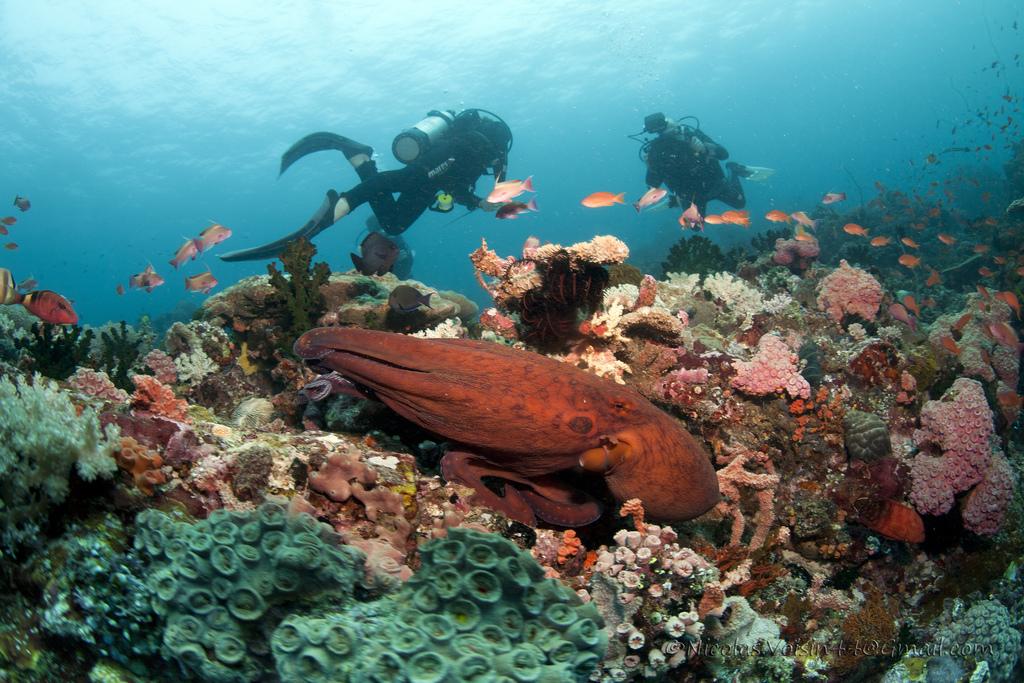
Scuba Diving at Anilao Cathedral Church Lucena City
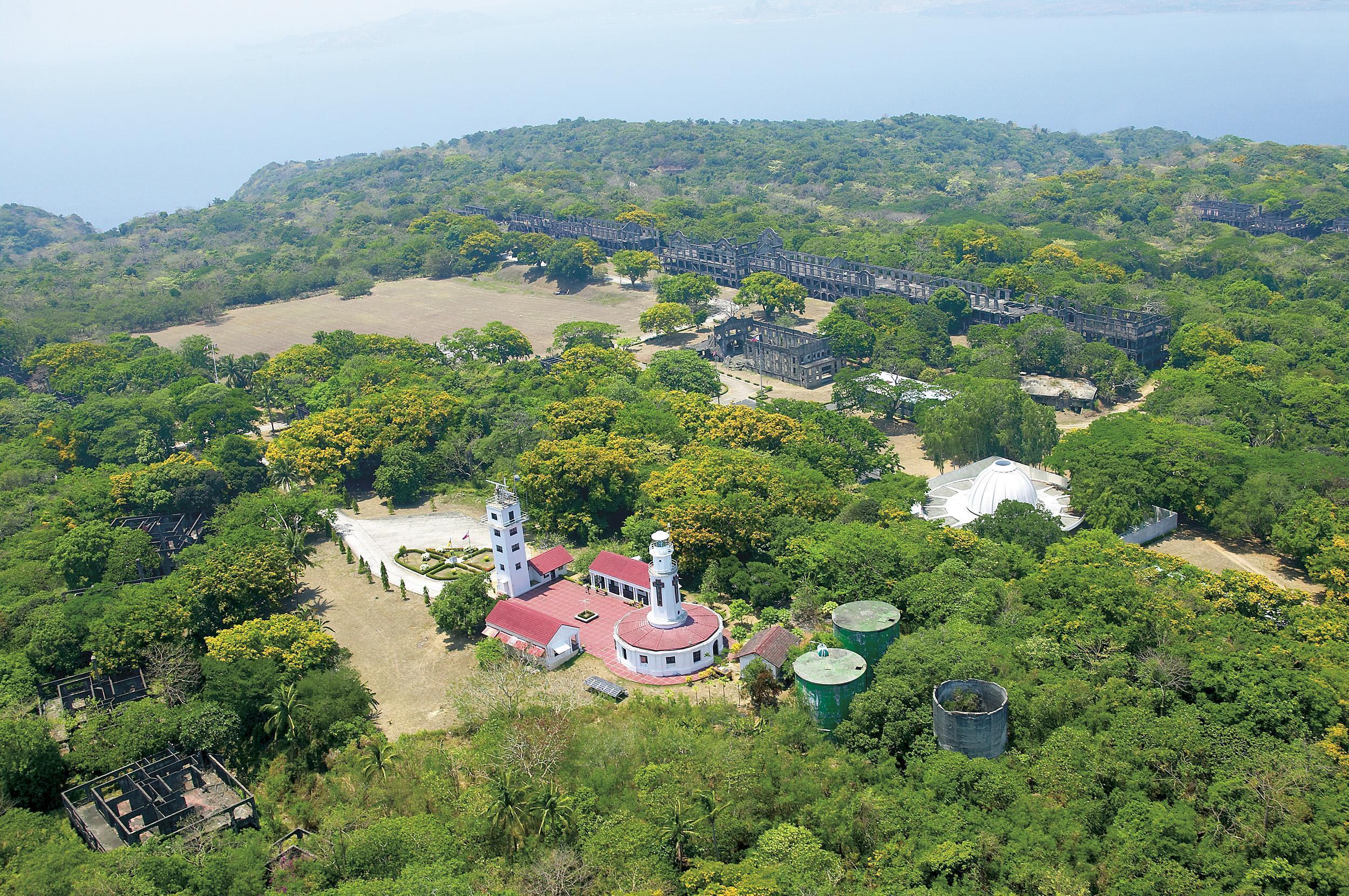
Corregidor Island Enchanted kingdom
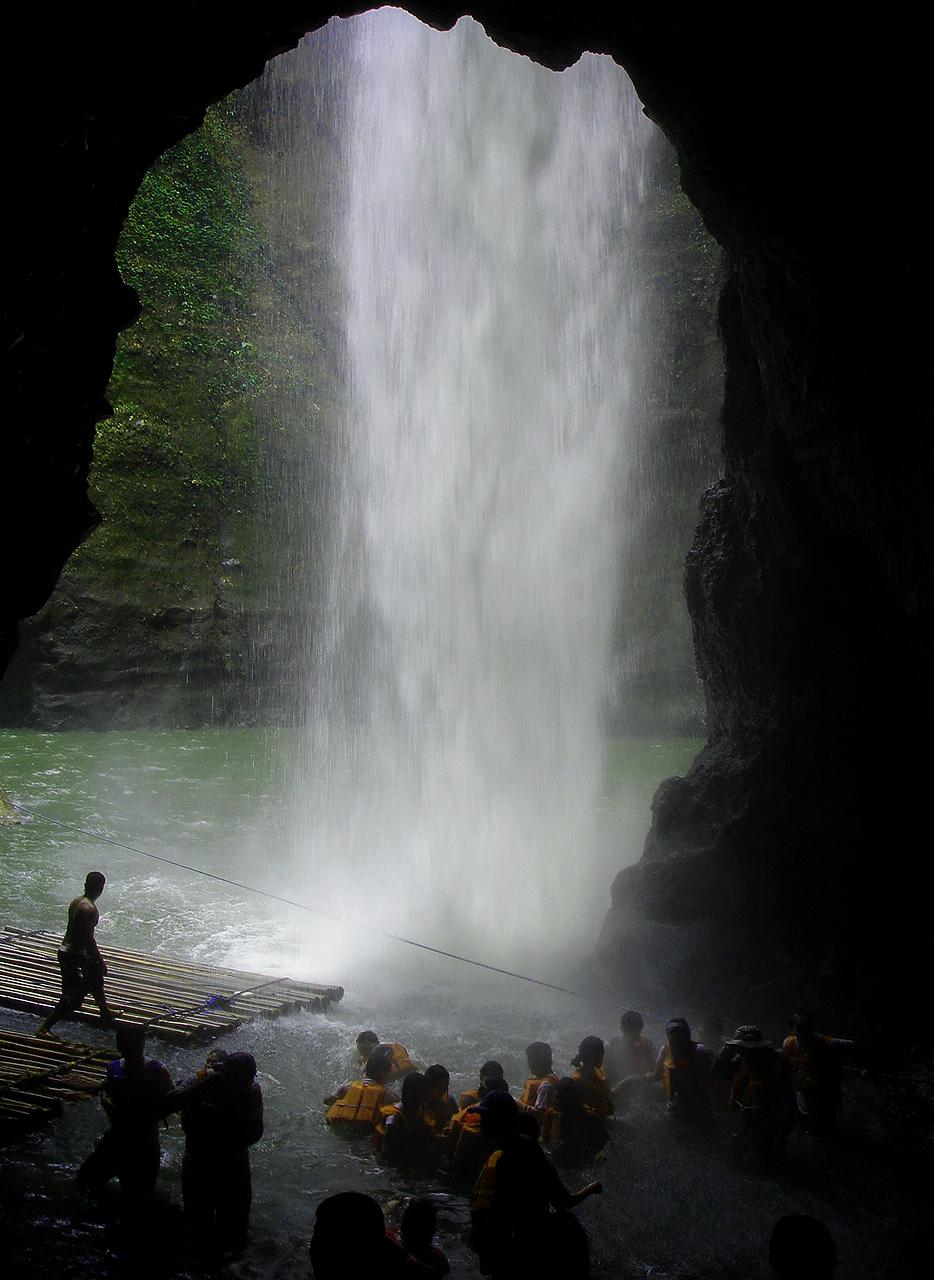
Pagsanjan Falls Mount Banahaw
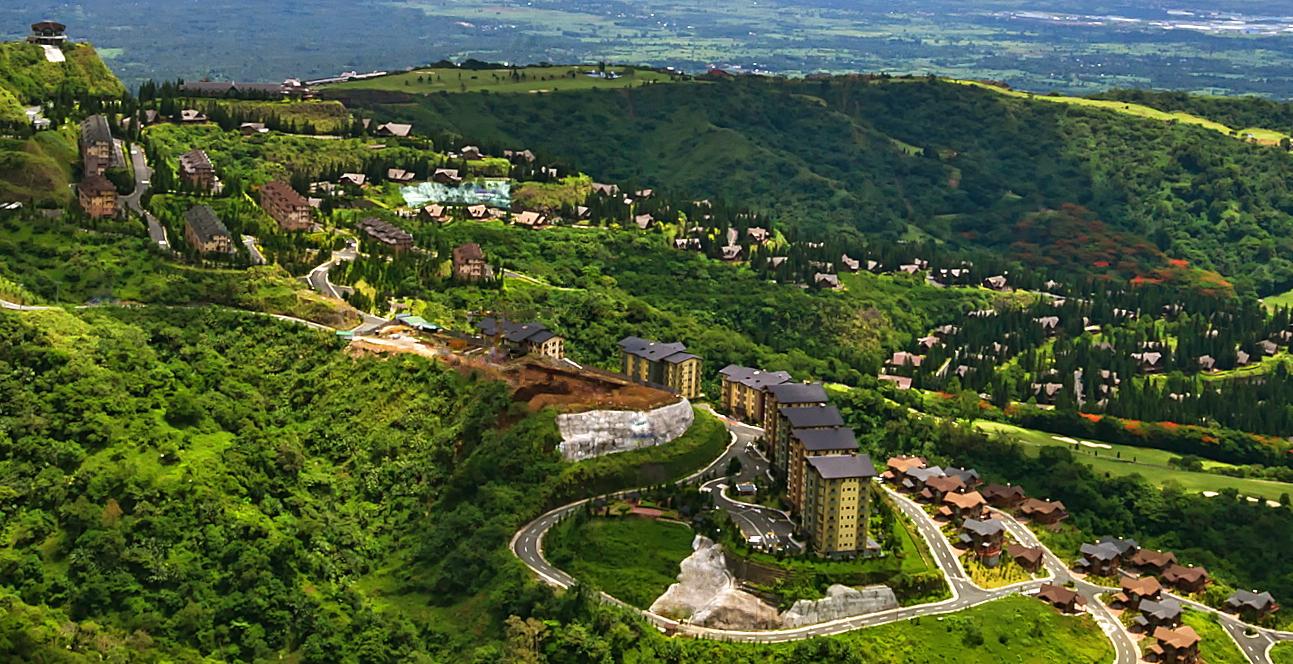
Tagaytay City Wawa Dam
- http://en.wikipedia.org/wiki/CALABARZON
About Us | Privacy Policy | Contribute Vigattintourism © 2024
Vigattin Tourism
Thursday, July 28, 2011
Region 4a - calabarzon.
- *Dasmariñas
- *Gen. Aguinaldo
- *Gen. Alvarez
- *Gren. Trias
- *Magallanes
- *Maragondon
- · Agoncillo
- · Alitagtag
- · Balayan
- · Balete
- · Batangas City
- · Bauan
- · Calaca
- · Calatagan
- · Cuenca
- · Ibaan
- · Laurel
- · Lemery
- · Lian
- · Lipa City
- · Lobo
- · Mabini
- · Malvar
- · Mataas Na Kahoy
- · Nasugbu
- · Padre Garcia
- · Rosario
- · San Jose
- · San Juan
- · San Luis
- · San Nicolas
- · San Pascual
- · Santa Teresita
- · Santo Tomas
- · Taal
- · Talisay
- · Tanauan City
- · Taysan
- · Tingloy
- · Tuy
2 comments:

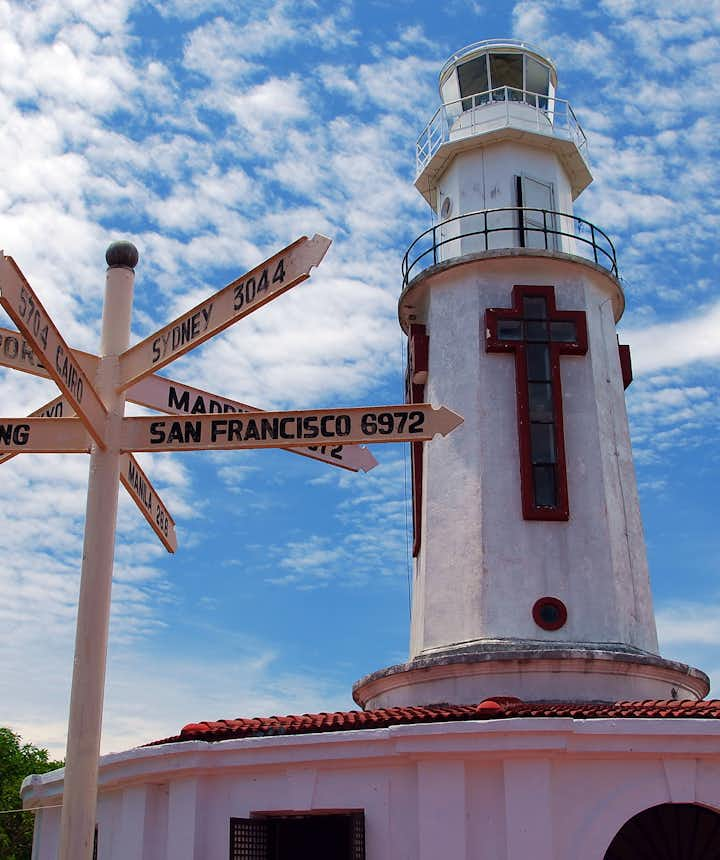
12 Best Cavite Province Tourist Spots: Historical Sites, Beaches & Waterfalls

- 12. Paniman Beach
- 11. Patungan Beach Cove
10. Balite Falls
9. boracay de cavite, 8. museo de la salle, 7. san roque parish church, 6. gourmet farms.
- 5. Mt. Pico de Loro
4. Imus Cathedral
3. malibiclibic falls.
- 2. Emilio Aguinaldo Shrine and Museum
1. Corregidor Island
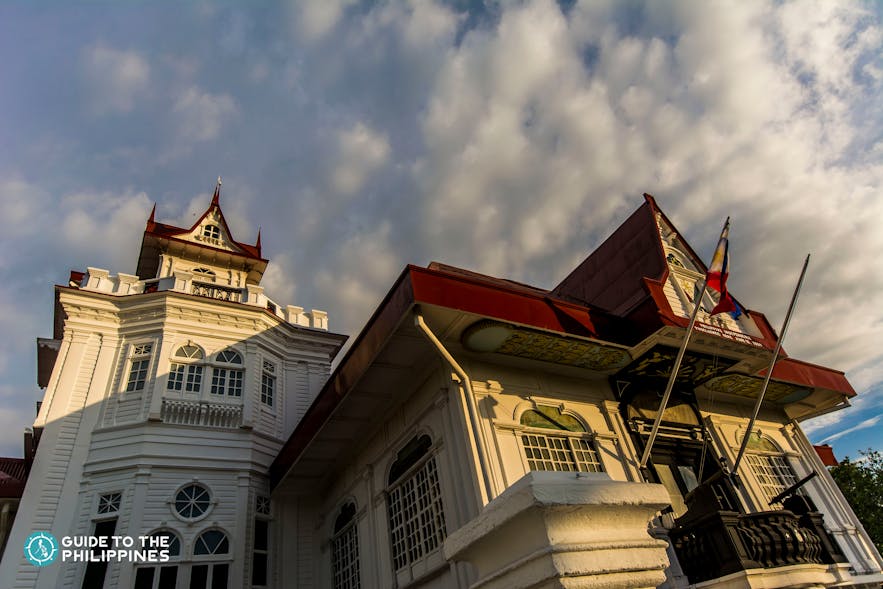
Explore the lush landscapes and idyllic spots in Cavite, also known as the Historical Capital of the Philippines or the Land of the Brave. Discover a multitude of attractions and find out why it’s a popular destination for weekend getaways.
Cavite is a suburban province that occupies the south of Manila Bay. It is only 2 to 3 hours or 33KM away from the capital city, Manila . Home to some of the top historical sites in the Philippines , Cavite is known as the birthplace of Filipino national heroes such as Juan Saraza Castañeda, General Pantaleon Garcia, and former president Emilio Aguinaldo.
See our popular Cavite Tours and Activities
Coffee farm tour at amadeo cavite near manila & tagaytay with live brewing & tasting sampler.
Cavite province also boasts a wide variety of scenic attractions, not just historical landmarks. You can immerse in its farms, coves, and beaches that are equally captivating. The province of Cavite also covers Tagaytay City , which is famous for its cool weather that you can experience when you join a Tagaytay tour . You can refer to our article on the best Tagaytay tourist spots to learn more.
- Book hotels in Metro Manila for your Cavite vacation
For this article, we'll cover the top tourist spots in Cavite province that you should add to your travel bucket list in the Philippines.

12. Paniman Beach
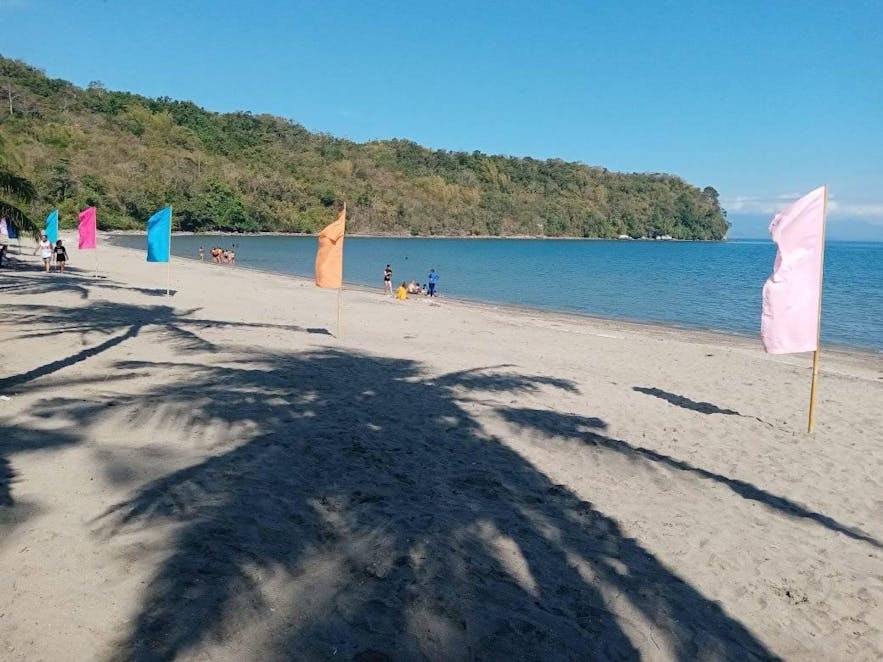
If you are looking for serene and less-crowded beaches near Manila , Paniman Beach is the place to be! This palm-fringed and powdery gray-sand beach is within the vicinity of Puerto Azul Golf Resort in Ternate, Cavite. It is one of the secluded spots in the province that features a quieter ambiance near the metro.
Paniman Beach is said to have been abandoned because the owners can no longer afford the operating costs of the entire beach resort. Nonetheless, it is still open for beach lovers who want to have a quick escape. It is a perfect tropical destination just 2 to 3 hours away from Manila. You can sunbathe, lounge on the gray sand, or plunge into the clean waters.
There is no reservation required, but you will need to pay the entrance fee. Feel free to occupy the shaded tables, cottages, and huts surrounding the resort.
11. Patungan Beach Cove
Another secluded and must-see beach spot in the province lies in Maragondon, Cavite. Situated at the southern side of Mt. Palay Palay or Pico de Loro, Patungan Beach Cove rivals those famous beaches in Batangas and Zambales. It boasts light brown sand, impressive rock formations, and breathtaking views of nearby islands.
To get there, you have to traverse the Nasugbu-Ternate Highway. You will drive across the 300-meter Kaybiang Tunnel, the longest road tunnel in the Philippines. Patungan Beach Cove is located at the farther end of the tunnel. Apart from its scenic beach, you can find a fishing village, which serves as the main livelihood of the locals.
There is no entrance fee here. However, cottages have a rental fee. You can bask in the sun, indulge in fresh seafood dishes, and even go island-hopping to the nearby pristine waters of Mugiw Island, Carabao Island, and Crocodile Island.
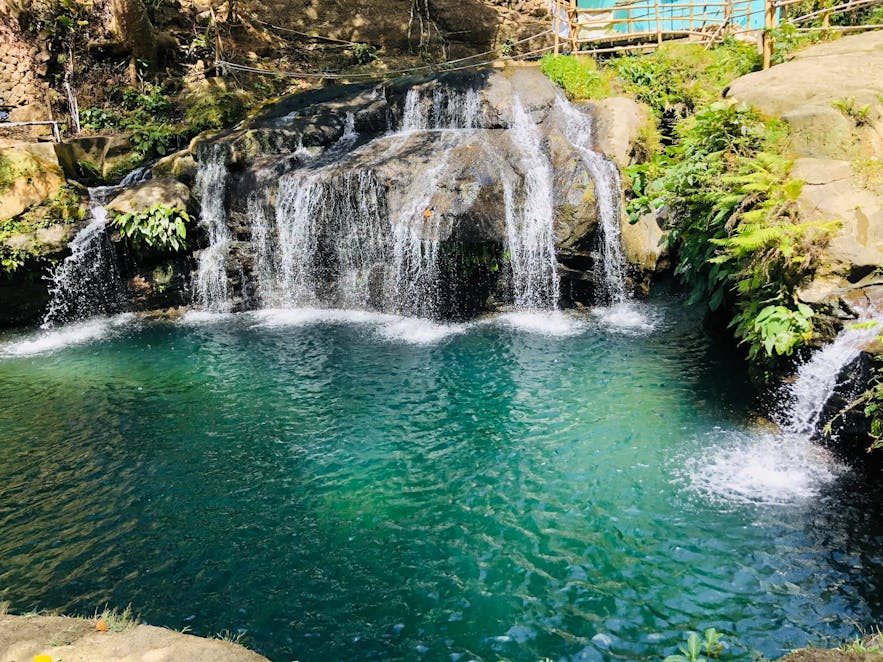
For those seeking a refreshing spot to unwind, visit Balite Falls in Amadeo, Cavite. Its enchanting waterfalls are among the several emerging attractions in Cavite. Enclosed inside a 4-hectare property, the Balite Falls has refreshing cold water gushing down a natural swimming pool.
It comprises two waterfalls. The bigger one naturally flows to the next one. It then cascades through various pipes and bamboo tubes. The running water fills the pool-sized watersheds— the deeper part is for adults, while kids can plunge into the shallow part. You can also jump off the edge of the falls and dive as deep as 18 feet below.
See our popular Waterfalls Tours
Cebu oslob whale shark watching, sumilon sandbar, tumalog falls tour with lunch & transfers, cebu oslob whale shark watching & kawasan canyoneering tour with safety gear, lunch & transfers, cebu oslob whale shark watching & tumalog falls private tour with transfers.
Upon entering the falls, you will need to pay an entrance fee. There are also surrounding cottages available for rent. If you come in a much bigger group, you can occupy a huge room that can accommodate up to 60 persons.
Among the many famous beaches in the south, Boracay de Cavite is one of the go-to weekend destinations and sought-after holiday spots. This famous Cavite beach features powdery fine gray sand and clean waters overlooking the Corregidor Island and Mount Mariveles in Bataan .
Also known as Katungkulan Beach Resort, Boracay de Cavite is just around 3 KM away from the Camp General Gregorio Lim Marine Base in Ternate, Cavite. The gray-sand beach is within the training grounds of the marines, so don’t be surprised if you see them roaming around the area. You can even find their firing range and barracks nearby.
To get there, you will need to secure an appointment before arrival to avoid coinciding with the military exercises. Adult visitors have to present a valid I.D. There is an entrance fee and cottages are available for rent.
You can also make use of the resort’s basic amenities: grilling station, toilet, shower area, volleyball court, and parking area. There is also a nearby store where you can buy snacks, drinks, toiletries, and even some souvenirs to bring back home.
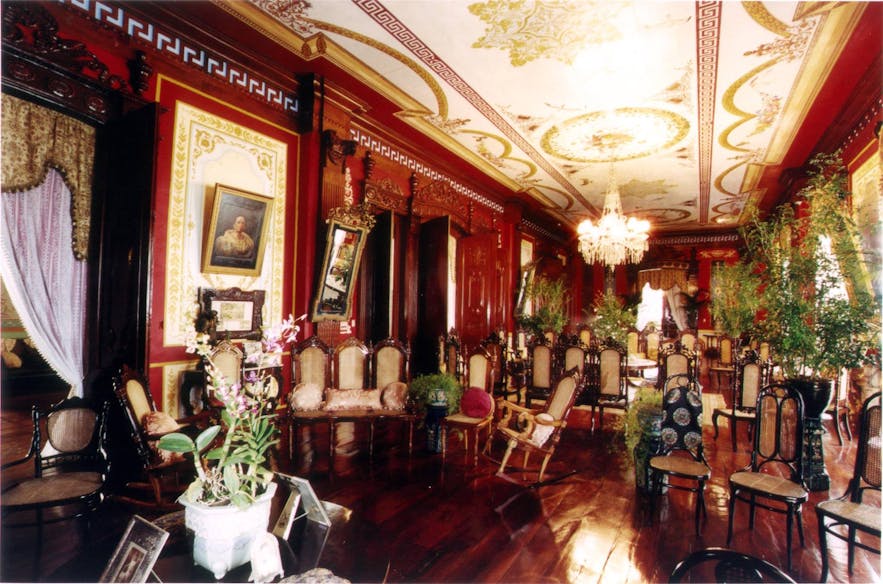
The province of Cavite is also home to various cultural and historical attractions. One of which is Museo De La Salle, the official museum of the De La Salle University System in Dasmariñas, Cavite. It aims to showcase the extravagant lifestyle of Ilustrados during the Spanish colonial period.
The museum’s architecture is reminiscent of the traditional Bahay-na-Bato. Featuring Mexican, Spanish, and Oriental architecture, Museo De La Salle houses antique wooden furniture, life-size religious statues, crystal chandeliers, and rare ceramics. Some of the collections and art pieces came from donations.
You will get a glimpse of the Spanish era when you browse through the museum’s vast collection of heirlooms and artifacts. The two-story building has a grand staircase, Azotea, and a Baroque altar at the center. To get inside the museum, you have to present a valid ID and pay an entrance fee.
See our popular Museum Tours
Cebu city & lapu-lapu city top heritage attractions tour with transfers, private baguio city culture tour with snacks & hotel transfers, aklan calawag mountain resort & tibiao museum tour with lunch & transfers.

The Diocesan Shrine of Our Lady of Solitude of Porta Vaga, also known as San Roque Parish Church, serves as a pilgrimage center in Cavite City. It is one of the most-visited churches in Cavite, especially during the Holy Week season. Catholics usually visit San Roque Parish Church as common practice for Visita Iglesia.
In 1700, the image of San Roque was aboard a badly damaged ship. Later on, the captain decided to place the image temporarily at the chapel. When it’s time to bring it back, the crewmen surprisingly cannot move the image. This mysterious experience made the people decide to venerate San Roque as the patron of the place.
Aside from its historic and picturesque structure, San Roque Parish Church also shelters Our Lady of Solitude of Porta Vaga, one of the National Cultural Treasures of the Philippines. During the Spanish era, the locals also used the icon of the Virgin Mary to bless the trade galleons heading to Acapulco, Mexico.

Cavite is also famous for its thriving agri-tourism scene and farm tours . The province is home to coffee bean plantations, organic farms, lush greeneries, and beautifully manicured landscapes.
One of the must-visit Cavite farms is Gourmet Farms, which claims to be the first-ever farm to introduce the Philippines’ finest coffee beans to the world. This first-ever commercial roasting facility and coffee bean plantation is an ideal spot for coffee lovers.
See our popular Farm Tours
Bohol countryside tour with loboc river cruise lunch & panglao island tour, tagaytay palace in the sky taal view & farms shared day tour with lunch & transfers from manila, guimaras top attractions & island hopping tour with lunch & transfers from iloilo city.
The owners of Gourmet Farms started as coffee traders in 1978. Since then, they have been producing single-origin arabicas, customized blends, and Philippine specialty coffee.
The founder and president, Ernest de Leon Escaler also decided to put up Gourmet’s Café, a roadside nipa hut restaurant alongside the 2-hectare organic farm in Silang, Cavite.
People from all over the country, including Manila’s Elite 400, have queued for hours to taste the restaurant’s heavenly Filipino-Italian meals served with gourmet coffee blends and teas from indigenous Philippine herbs.
Gourmet Farms is open daily from 7 AM to 9 PM. You can also drop by its store to buy local delicacies, organic food, and souvenir items.
5. Mt. Pico de Loro
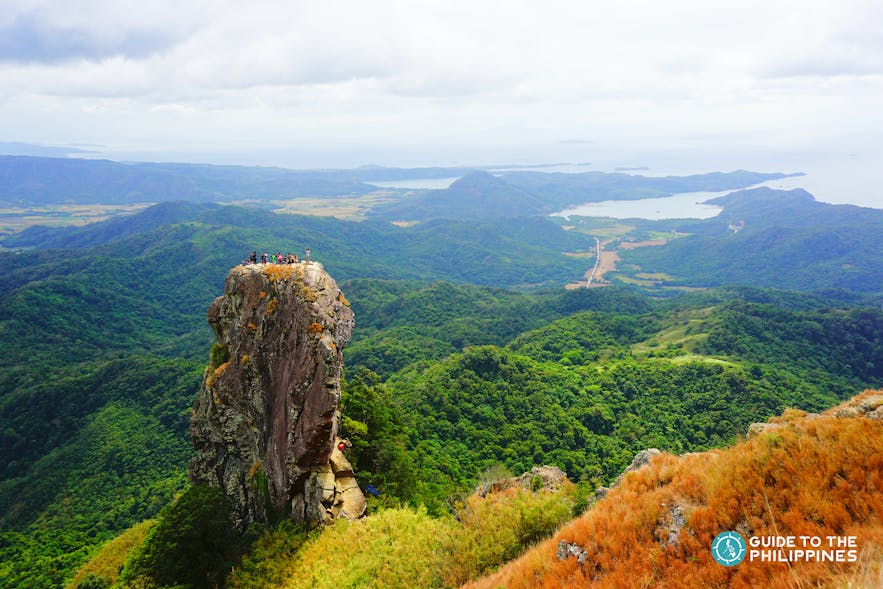
Also known as Mt. Palay Palay, Mt. Pico de Loro stands majestically between Maragondon, Cavite, and Nasugbu, Batangas. It is a dormant volcano that rises over 664m above sea level. It is one of the top hiking destinations in the Philippines .
The name “Pico de Loro” means parrot’s beak, which forms a resemblance to the mountain’s summit. Its breathtaking summit offers an unobstructed view of the nearby provinces of Laguna and Batangas. You can also witness the nearby scenic islands of Limbones, Corregidor, and Carabao.
See our popular Hiking Tours
Scenic 2-day treasure mountain rizal camping package with daranak falls side trip & transfers, 2-day adventure to buscalan kalinga tattoo village of apo whang-od from manila with homestay & meals, rizal treasure mountain day pass with breakfast, obstacle course, giant seesaw & bosay falls trek.
Before going on a hiking adventure, you should first consider varying levels of difficulty. Relatively, Mt. Pico de Loro has a beginner-friendly trail with a difficulty level of 3/9.
It has a minor climb classification; therefore, it only takes up to 5 hours to reach the summit. Its trail class is between 1-3, which means that the terrain has rugged paths and moderately steep slopes. You will have to rappel through a 50ft-high monolith to the top.
The jump-off point is at the DENR station in Ternate. For your safety, there are Eco guides who will accompany you throughout the hike. Currently, Mt. Pico de Loro is indefinitely closed.
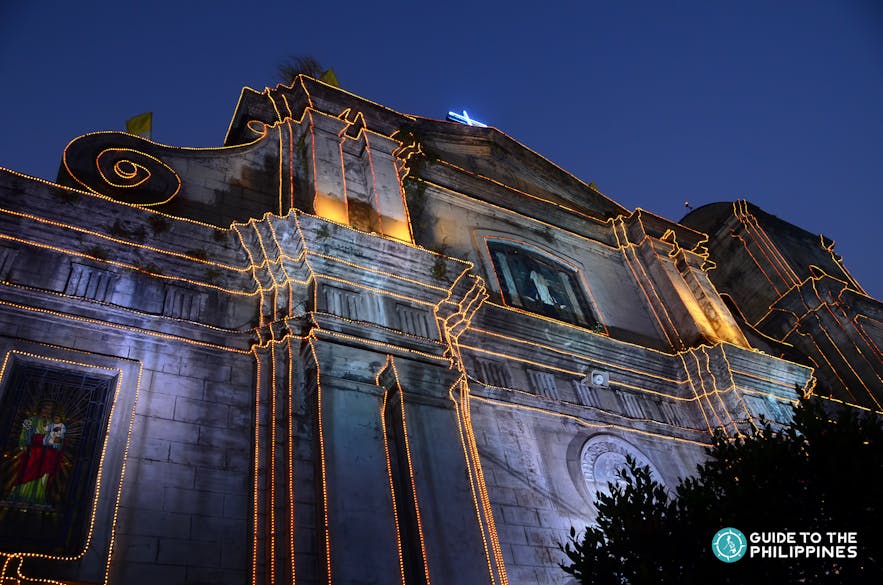
Another solemn and impressive church in Cavite is the Imus Cathedral, also known as The Diocesan Shrine and Parish of the Our Lady of the Pillar. It serves as a significant part of the history and culture of Caviteños, which dates back to the 1820s.
The Cathedral started as a small chapel in Kawit. However, the Augustinian recollects petitioned the Spanish government to convert Imus into an independent municipality. In November 2006, the National Historical Institute declared Imus Cathedral as a structure of historical significance.
The Hispanic architecture of the church has been beautifully preserved until now. Apart from the bricks and stones on its walls, you can also find Latin inscriptions on its arches. The pattern of the facades somewhat resembles the Manila Cathedral in Intramuros.
Imus Cathedral is a notable landmark for pilgrims not just from Cavite, but also from different provinces. Those who plan to have their Visita Iglesia and heritage tour in Cavite might want to include this historic church on your list.
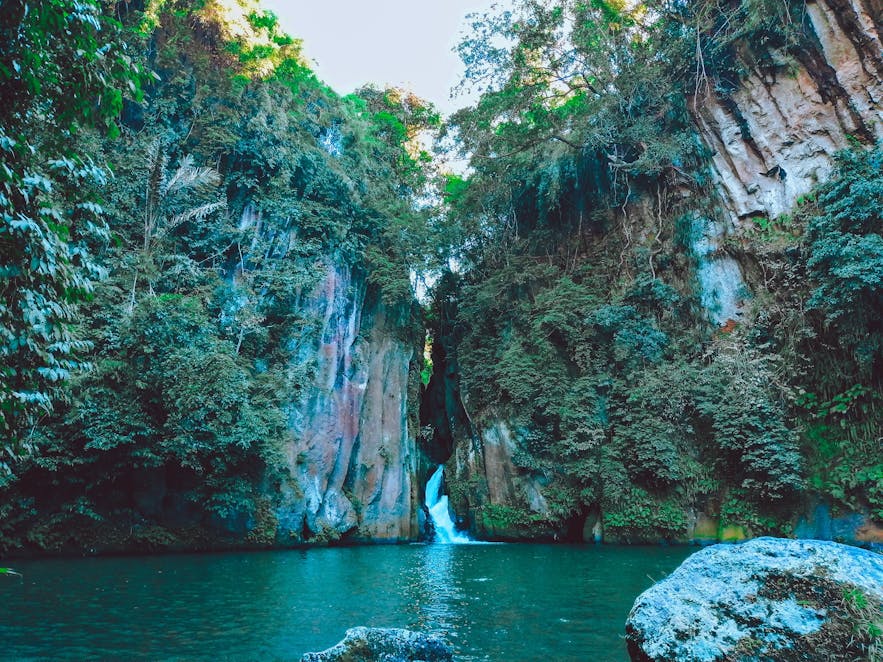
One of the hidden gems in Cavite is nestled between General Emilio Aguinaldo (formerly Bailen), Maragondon, and Magallanes towns. Malibiclibic Falls is a result of three rivers merging from a 100-meter cliff below a grassland. The cascading water also pours to a wide catch basin perfect for a refreshing dip.
Described as the Amazon of Cavite, the surrounding greenery of Malibiclibic Falls is somewhat comparable to the lush landscapes of the famous rainforest. At first glance, the enchanting waterfalls seem to emerge from an enormous crack between two large and towering boulders.
To get there, you have to go through a 30-minute hike. The downhill trail is easy to navigate; however, it gets challenging when you pass through huge rocks and moss-covered boulders.
There is no entrance fee, but you need to pay an environmental fee. Travelers who have been to Malibiclibic Falls describe their trip as a spiritual and worthwhile experience.
2. Emilio Aguinaldo Shrine and Museum

One of the top historical tourist spots in Cavite is Emilio Aguinaldo Shrine and Museum, the site of the first unfurling of the Philippine flag. Former president Emilio Aguinaldo officially proclaimed the Philippine Independence from Spanish colonization on June 12, 1898, on the balcony of his home in Kawit, Cavite.
During the historical event, the Banda Malabon played the Philippine national anthem composed by Julian Felipe. On June 18, 1964, the late president Diosdado Macapagal declared the Aguinaldo Mansion as a National Shrine.
See our popular History Tours
Bohol chocolate hills countryside private tour with transfers & add-on loboc river cruise lunch, cebu city top attractions half-day private tour with transfers, bohol countryside private tour with loboc river cruise lunch & transfers from cebu city.
The Aguinaldo Museum, also known as the House of History, features secret passages and compartments for documents and weapons. There is even a bomb shelter that leads to the nearby church.
Like the traditional Bahay-na-Bato, the mansion displays antique furniture, mesa altar, and other art deco-inspired elements. The ground floor serves as a museum, while the tomb of Aguinaldo lies in the garden behind the house.
The design of the mansion also reflects Aguinaldo’s ardent patriotism. There are evident symbols that adorn the ceiling, including an eight-rayed sun that represents the revolt of eight provinces as seen in the Philippine flag.
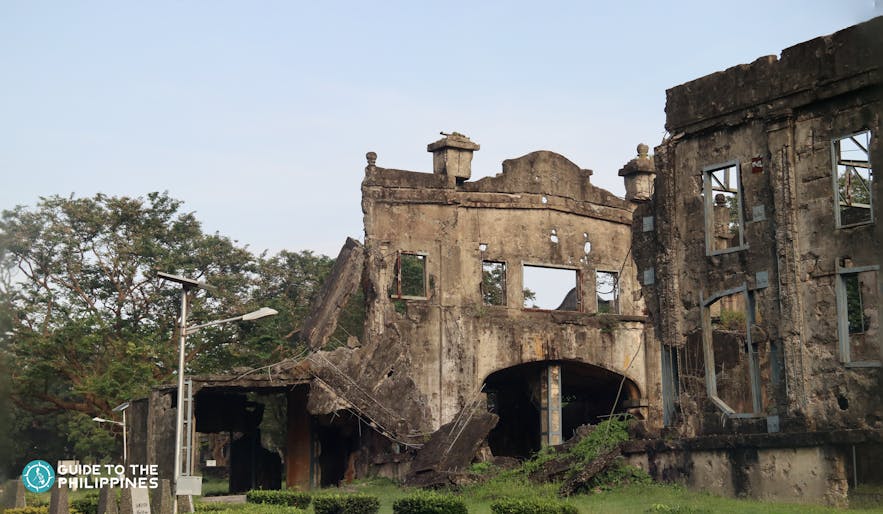
The island fortress of Corregidor is strategically located at the entrance of Manila Bay, south of Bataan, but it’s under the territorial jurisdiction of Cavite. It's one of the best day tour destinations near Manila .
Corregidor Island (Fort Mills) is one of the harbor defenses and vital combat zones between the Japanese Imperial Army and allied forces during World War II.
During Corregidor tours, you can try various fun activities. Revisit Corregidor’s glorious past while riding a tram, an ancient railway system in the early 1900s. The tranvia passes through the Malinta Tunnel, a bombproof shelter that served as McArthur’s headquarters and a hospital for wounded soldiers. You will also marvel at the ruins of Middleside Barracks, former home to more than 2,500 Filipino and American soldiers.
If you want to explore other stunning spots on the island, you can also go biking across the Mile-Long Barracks and South Beach. The island is also teeming with diverse flora and fauna. Other must-visit Corregidor attractions include the Japanese Memorial Garden and Pacific War Memorial Museum.
Those looking for adventures can join hikes with trails ranging from easy to advance. You can discover secret caves, pass by hidden tunnels, and witness the nearby Conchita Island and the Bataan Peninsula.
Explore the Best Attractions of Cavite

Cavite is one of the popular business and transportation centers in the Southern Tagalog region. It is also commonly referred to as a commuter’s gateway to Manila, the vibrant capital of the Philippines.
Amidst the bustling city lies lush greeneries, tropical landscapes, enchanting waterfalls, and gray-sand beaches. Despite having various historical and cultural attractions, the province also boasts organic farms and coffee bean plantations nestled in its secluded towns.
While exploring Cavite, you will discover compelling facts about different Philippine historical events. You will also learn about the rich cultural heritage of the province. You can try various adventures, go on hiking tours, and spend weekend beach trips.
Start planning your next weekend getaway to the Historical Capital of the Philippines! Check out the best Cavite tourist spots, learn where to book the top Cavite tours , and get to know the exciting activities that you can add to your Cavite itinerary.
Popular articles

Best Palawan Guide: Top Tours, Where to Stay, How to Get Around
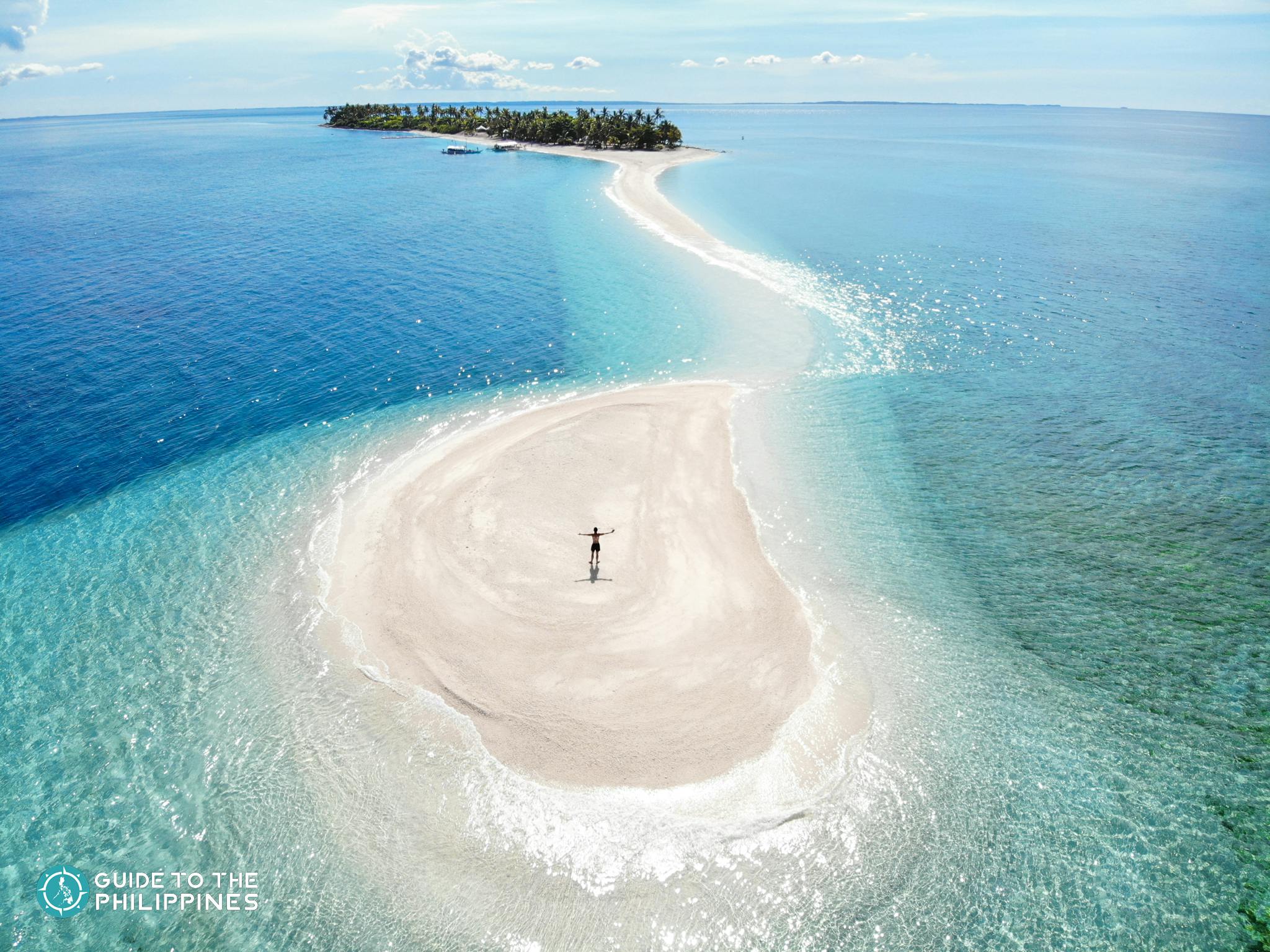
20 Most Beautiful Sandbars in the Philippines: White Sand, Longest, Vanishing
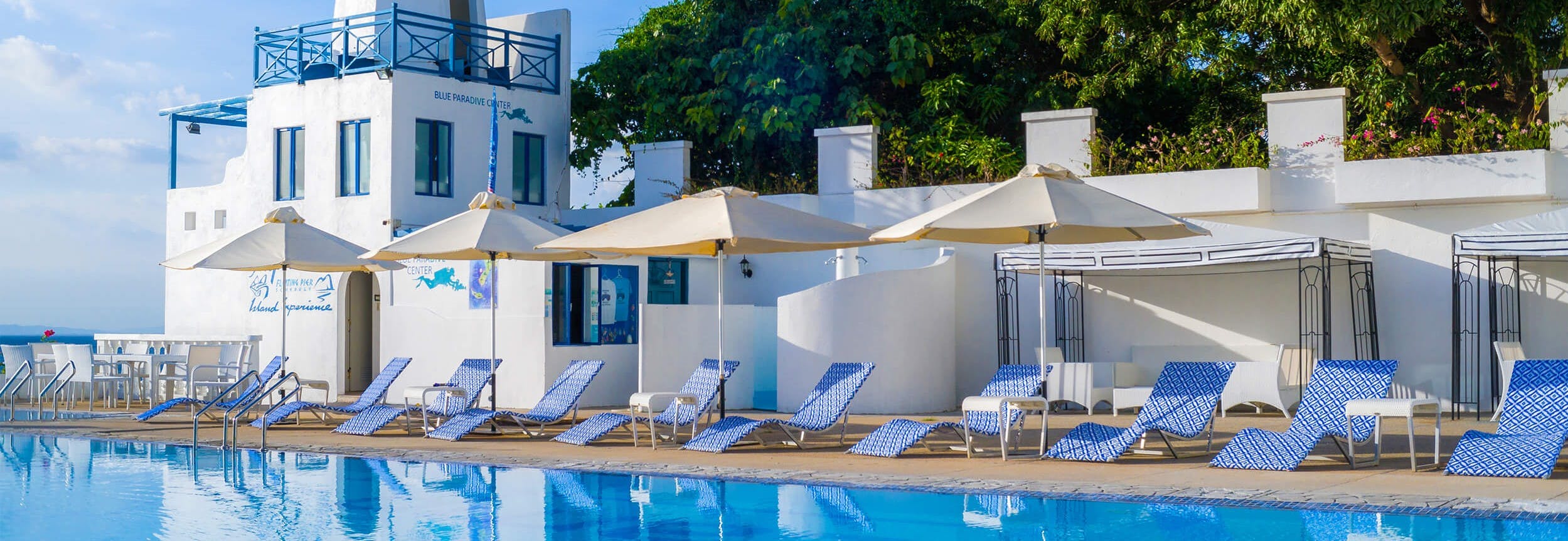
11 Best Santorini-Like Resorts in the Philippines: Near Manila, Cebu, Palawan, Vigan
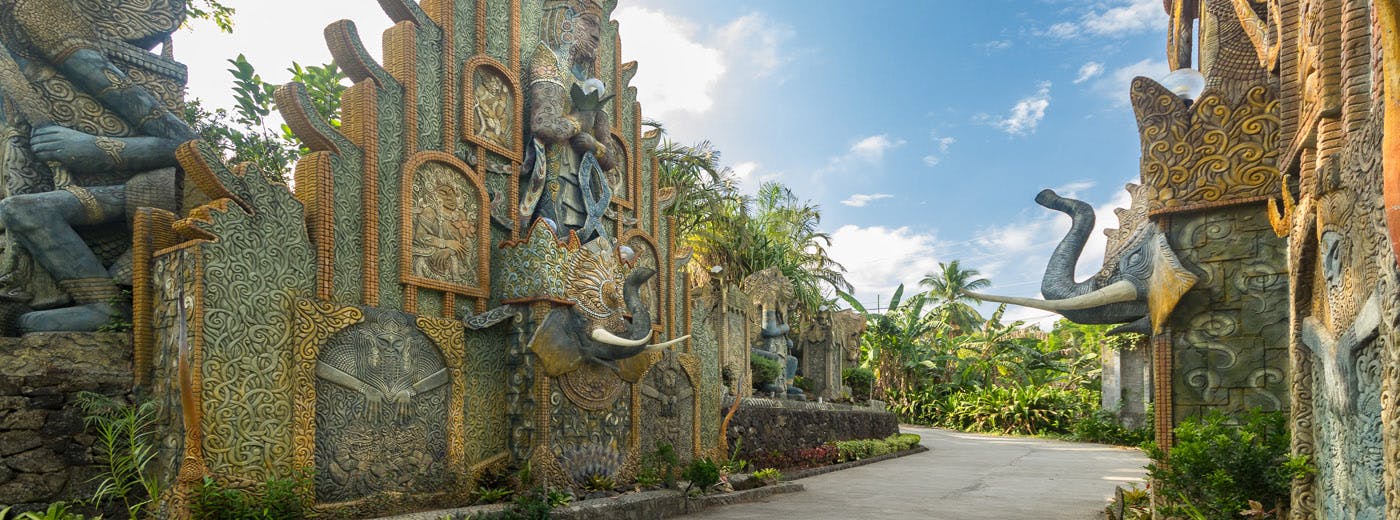
15 Best Tropical Bali-Like Resorts in the Philippines: Near Manila, Siargao, Cebu, Bohol
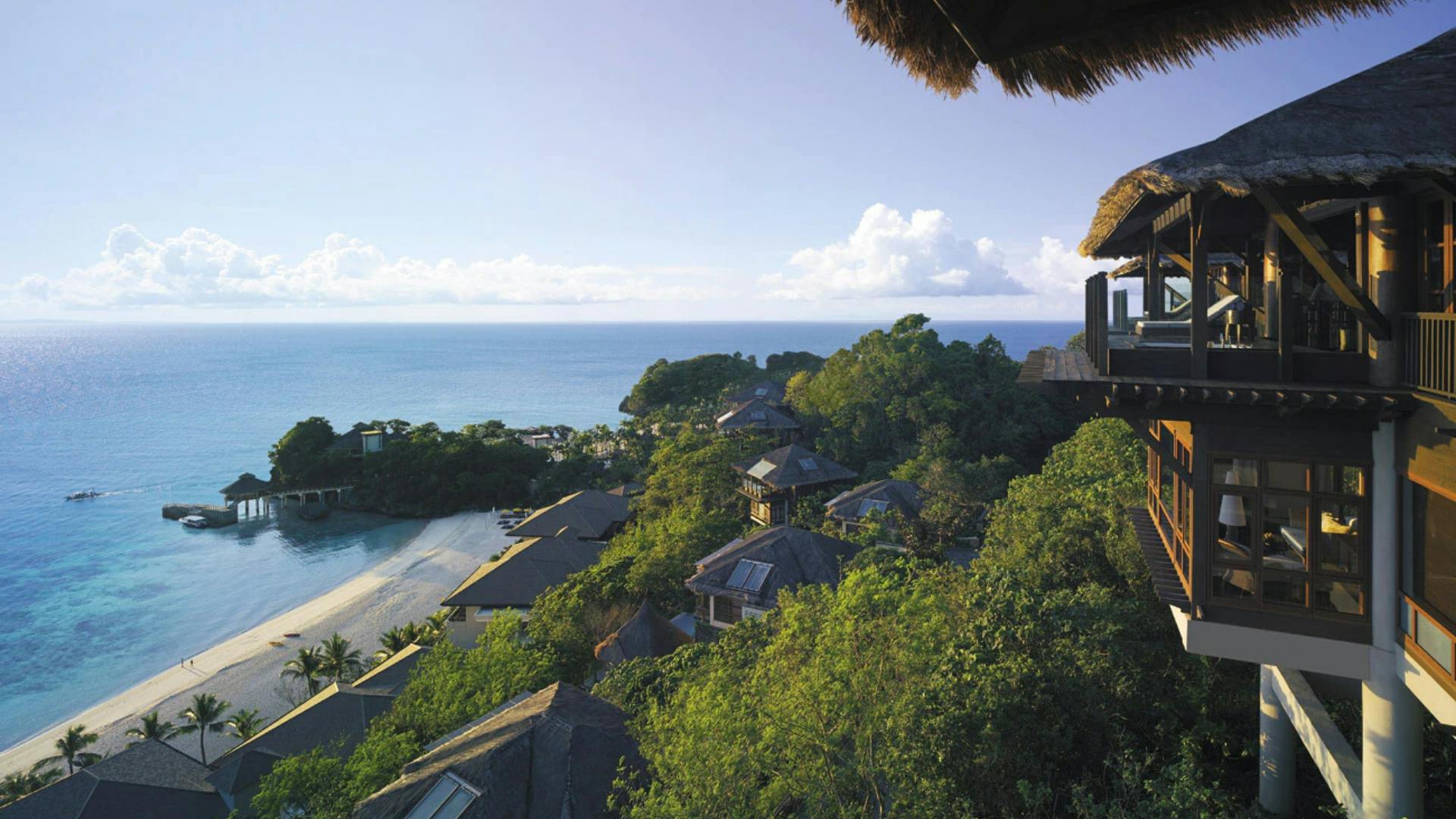
10 Best Treehouse Resorts in the Philippines for a Scenic Getaway at Mountains, Beaches & Rivers
Other interesting articles.
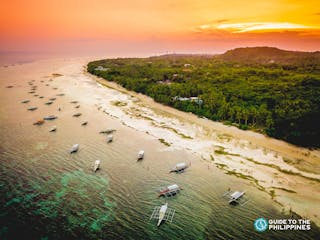
Top 12 Must-Try Tours & Activities in Bohol
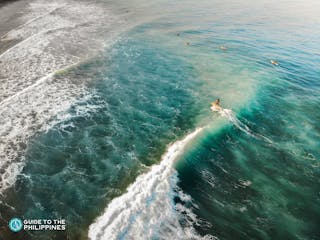
BEST La Union Tourist Spots and Activities Aside from Surfing
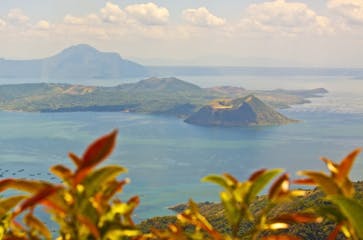
13 Tagaytay Coffee Shops with Taal View That You Should Visit

Download the Philippines’ biggest travel marketplace to your phone to manage your entire trip in one place
Scan this QR code with your phone camera and press the link that appears to add the Philippines’ biggest travel marketplace into your pocket. Enter your phone number or email address to receive an SMS or email with the download link.
Top things to do in the Philippines
Discover all the adventures you can experience in the Philippines
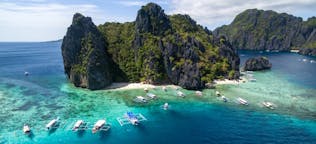
Philippines Tour Packages
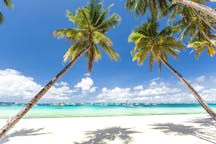
Boracay Island
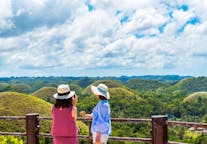

Bohol Island
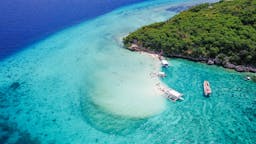
Cebu Island
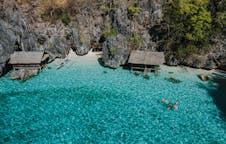
Coron Palawan
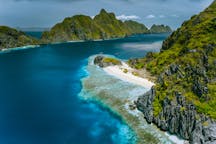
El Nido Palawan
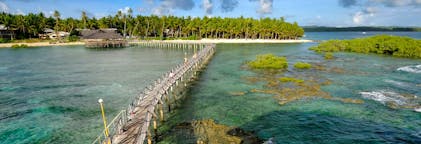
Siargao Island
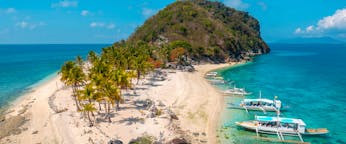
Iloilo City and Nearby
Explore the Top 30 MIMAROPA Region Tourist SpotsRegion - A Tapestry of Natural Marvels and Cultural Gems
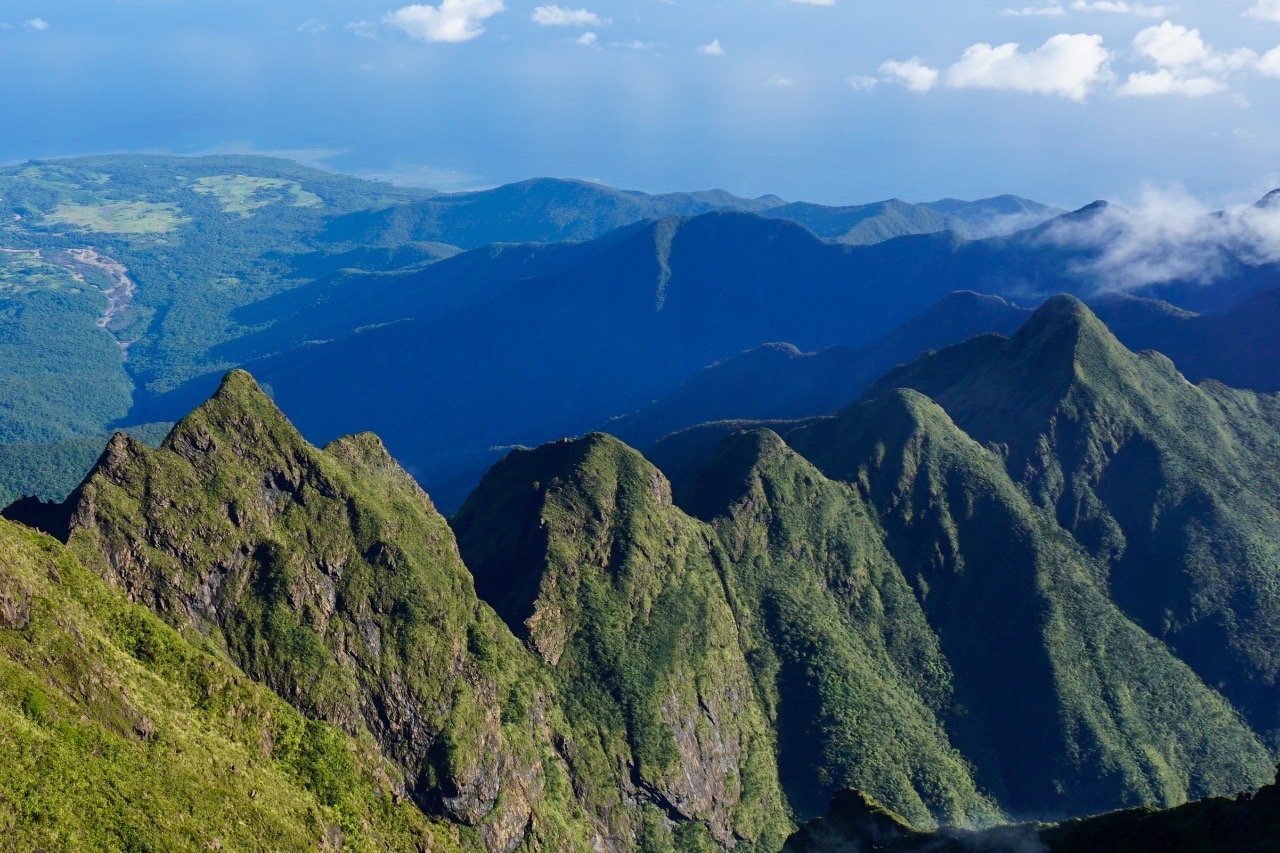
Welcome to MIMAROPA Region, a captivating destination in the Philippines that presents a tapestry of natural marvels and cultural gems. Situated in the southern part of Luzon, this region offers a wealth of tourist spots that will leave you spellbound. Join us as we unveil the top 30 must-visit attractions in MIMAROPA, ensuring an extraordinary travel experience.
If you plan to visit any of the places in the region, better read my blog on how I developed the FREE ITINERARY BUILDER.
El Nido - Located in Palawan
El Nido is renowned for its stunning limestone cliffs, crystal-clear turquoise waters, and hidden lagoons. Embark on island-hopping tours and witness the extraordinary beauty of Bacuit Bay.
Puerto Princesa Underground River
Explore one of the New Seven Wonders of Nature in Puerto Princesa, Palawan. Cruise through the underground river, marveling at its awe-inspiring rock formations and diverse ecosystem.
Coron Island
Discover Coron's captivating landscapes, including Kayangan Lake, Barracuda Lake, and Twin Lagoons. Snorkel or dive amidst World War II shipwrecks and vibrant coral gardens.
Tubbataha Reefs Natural Park
Immerse yourself in the pristine underwater paradise of Tubbataha Reefs, a UNESCO World Heritage Site known for its vibrant marine biodiversity.
Port Barton
Experience the laid-back charm of this hidden gem in Palawan. Relax on its secluded beaches, swim in crystal-clear waters, and soak in the tranquil ambiance.
Apo Reef Natural Park
Dive into Apo Reef's thriving coral reefs and encounter diverse marine species, including sea turtles, reef sharks, and colorful tropical fish.
Mount Guiting-Guiting
For seasoned mountaineers, embark on a challenging trek up the magnificent Mount Guiting-Guiting in Sibuyan Island, Romblon. Marvel at its picturesque landscapes and unique flora and fauna.
White Island
Located in Camiguin, White Island is a pristine sandbar surrounded by crystal-clear waters. Take a boat ride and relish in the breathtaking views of the island and Mount Hibok-Hibok.
Balay Cuyonon Museum
Delve into the rich cultural heritage of Cuyo Island, Palawan, by visiting this museum. Discover artifacts and exhibits showcasing the history and traditions of the Cuyonon people.
Calawagan Mountain Resort
Escape to this serene mountain resort in Oriental Mindoro. Engage in outdoor activities such as hiking, swimming in natural pools, and camping amidst lush greenery.
Tabon Caves
Unearth the archaeological wonders of Tabon Caves in Quezon, Palawan. Explore ancient burial sites and admire cave paintings dating back thousands of years.
Mangyan Village
Immerse yourself in the indigenous culture of the Mangyan people in Mindoro. Visit their traditional villages and learn about their customs, crafts, and way of life.
Malampaya Sound Protected Landscape and Seascape
Embark on an eco-adventure in Taytay, Palawan. Cruise through the mangrove forests, spot diverse wildlife, and support local conservation efforts.
Sablayan Zipline
Experience an adrenaline rush as you soar above Sablayan's lush landscapes on one of the longest ziplines in Asia. Enjoy panoramic views of Mindoro Island and the surrounding seascape.
Port of Calapan
Explore the bustling city of Calapan in Oriental Mindoro through its vibrant port area. Enjoy fresh seafood, shop for local goods, and experience the lively atmosphere.
Ambulong Island
Discover the untouched beauty of Ambulong Island in Occidental Mindoro. Relax on its pristine beaches, go snorkeling to witness vibrant marine life, and indulge in a beachside picnic.
Palaypay Falls
Trek through the lush jungles of Romblon to reach Palaypay Falls, a stunning multi-tiered waterfall. Take a refreshing dip in its clear waters and relish the tranquil surroundings.
Bonbon Beach
Lose yourself in the beauty of Romblon's Bonbon Beach, renowned for its fine white sand and crystal-clear waters. Capture Instagram-worthy photos and enjoy a peaceful beach day.
Lusong Coral Garden
Snorkel or dive in the vibrant underwater world of Lusong Coral Garden in Coron, Palawan. Encounter colorful coral formations, tropical fish, and even sea turtles.
Pandan Island
Escape to Pandan Island in Occidental Mindoro, a secluded paradise perfect for snorkeling, diving, and beachcombing. Enjoy the tranquility and the island's unspoiled beauty.
Sibaltan Heritage Village
Immerse yourself in the traditional way of life at Sibaltan Heritage Village in El Nido, Palawan. Interact with the locals, learn about their customs, and appreciate their handicrafts.
Ambon-Ambon Falls
Trek through the rainforest in Romblon to witness the cascading beauty of Ambon-Ambon Falls. Take a refreshing dip in the natural pool at its base and enjoy the serene surroundings.
Calauit Safari Park
Get up close with exotic wildlife at Calauit Safari Park in Busuanga, Palawan. Embark on a guided tour and spot rare species such as giraffes, zebras, and Calamian deer.
Alibijaban Island
Experience tranquility on Alibijaban Island, a hidden gem in Quezon province. Enjoy the powdery white sand, clear waters, and stunning sunsets that make it a true paradise.
Romblon Marble Quarry
Discover the rich marble heritage of Romblon by visiting its renowned marble quarries. Witness the craftsmanship and learn about the intricate process of marble production.
Hamilo Coast
Indulge in luxury at Hamilo Coast in Batangas. Relax on its pristine beaches, enjoy water sports, and immerse yourself in the beauty of its coastal landscapes.
Take a cultural journey through Buhay Isla in Roxas, Palawan. Experience the traditional fishing lifestyle, enjoy a seafood feast, and witness a vibrant performance of local dances.
Siete Pecados Marine Park
Dive into the vibrant underwater world of Siete Pecados Marine Park in Coron, Palawan. Snorkel or dive amidst colorful coral reefs and encounter a diverse array of marine species.
Boac Cathedral
Visit the stunning Boac Cathedral in Marinduque, a centuries-old church known for its intricate architectural details and rich religious history.
Coral Garden in Bulalacao
Explore the thriving Coral Garden in Bulalacao, Oriental Mindoro. Snorkel or dive in its crystal-clear waters to witness the beauty of the coral formations and the marine life they support.
With these top 30 tourist spots in MIMAROPA Region, the Philippines, you are bound to have an unforgettable adventure. From pristine islands to cultural heritage sites, this region offers a diverse range of attractions that showcase the natural
Discover the Top 30 CALABARZON Tourist Spots - So Many to Visit
Unveiling the top 30 tourist spots in region 3, philippines: exploring the cultural and natural treasures.


Touropia Travel
Discover the World
9 Top Destinations in Central Luzon, Philippines
By Alex Schultz · Last updated on November 3, 2023
Although it is known as ‘the rice granary of the Philippines’, Central Luzon has much more to it than just endless plains of rice fields as magnificent mountains peaks are to be found alongside twinkling waterfalls, beautiful beaches and a wonderfully wild and rugged coastline.
Located just to the north of Manila, its diverse landscapes are home to a whole host of different peoples and cultures with each of the seven provinces that make up Central Luzon having its own unique look, feel and identity.
With lots of wonderful old colonial-era architecture to discover, delicious local cuisine to sample and fun-filled festivals to take part in; this delightful region of the Philippines is well worth exploring if you have the chance.
Map of Central Luzon
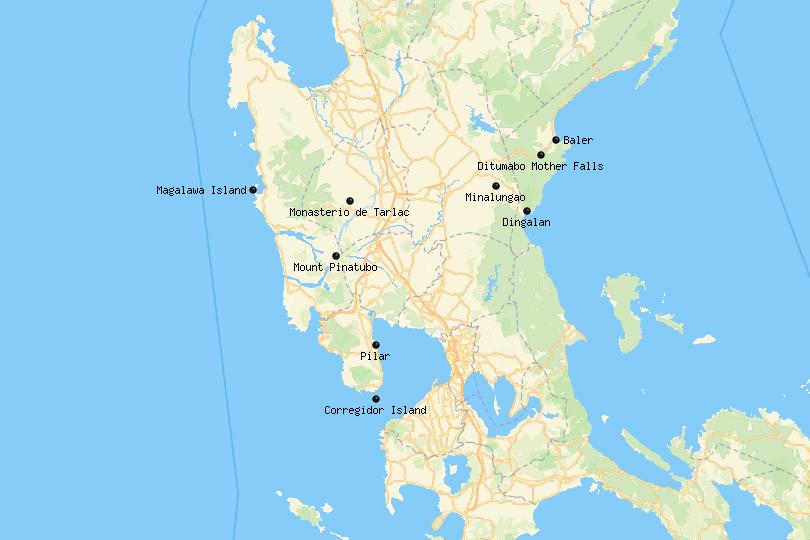
9. Ditumabo Mother Falls [SEE MAP]
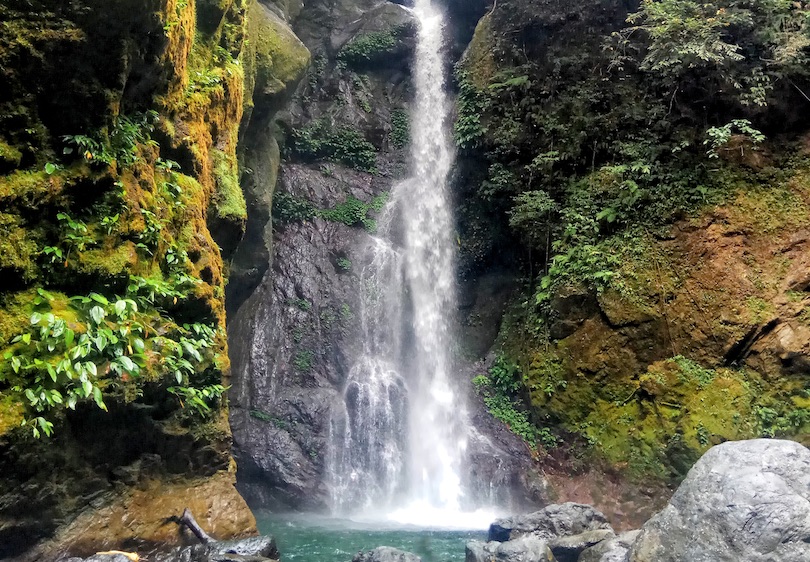
Majestic to behold, Ditumabo Falls gushes forth from up high. The dazzling white of its waters contrasts stunningly against the lush green of the rainforest that lies to either side of it. The impressive waterfall is also known as Mother Falls since it is the largest and grandest in the area.
While the waterfall only reaches about 15 meters in height, its scenic setting makes it a very picturesque place to spend some time, although it can get crowded during the weekends. After hiking for an hour through the jungle to reach the falls, nothing beats bathing in the clear pool that lies at its foot and basking in the fantastic scenery all around you.
8. Minalungao National Park [SEE MAP]
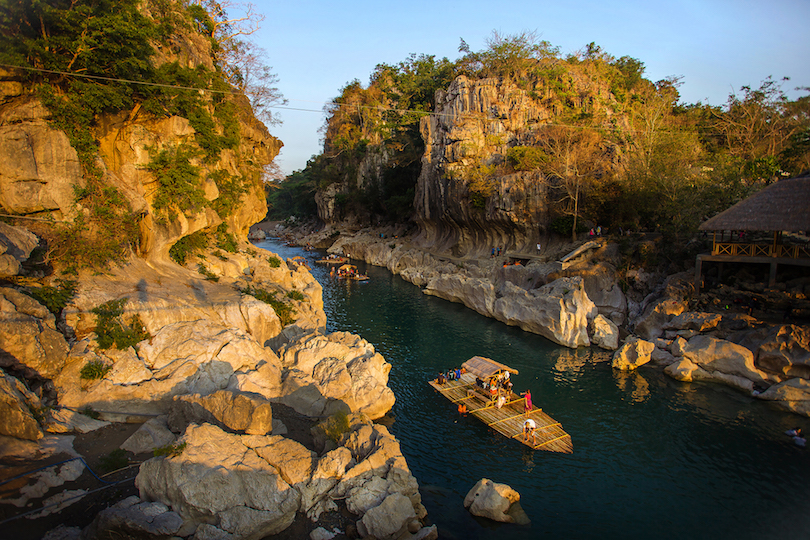
Established in 1967 to protect and preserve the scenic Penaranda River and its surroundings, Minalungao National Park is home to some of the most beautiful and pristine nature in Central Luzon.
As it is promoted as an ecotourism destination by the local government, it should come as no surprise to learn that the national park has a wealth of fantastic outdoor activities for you to enjoy, with hiking, rock climbing, and ziplining all on offer.
In addition to this, you can also go swimming or kayaking on the river – or even rafting and cliff diving if you feel brave enough. While its range of outdoor activities will certainly keep you entertained for days, the scenery on show is just as arresting; the emerald waters of the river are beautifully framed by glimmering limestone formations looming above it.
7. Magalawa Island [SEE MAP]
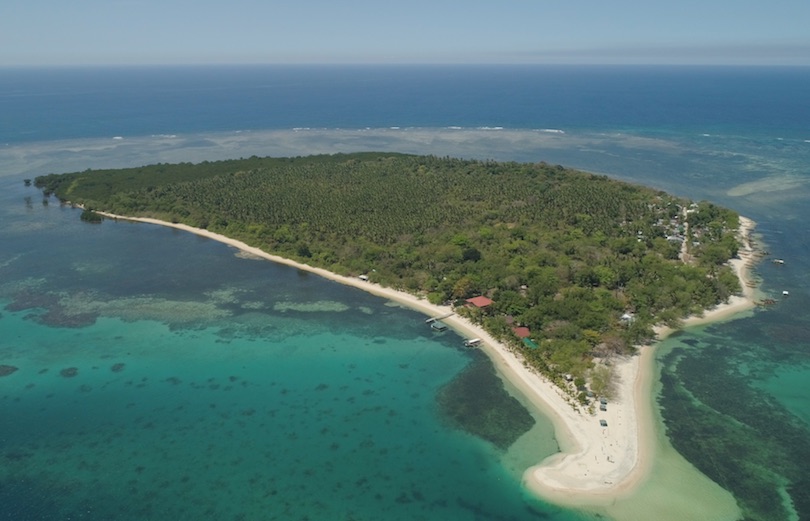
Lying just off the west coast of Central Luzon and surrounded by the glittering waters of the China Sea, Magalawa Island is a fantastic place to head to if you’re looking for a quiet getaway.
With beautiful white sand beaches lining its shores and gently swaying palm trees wherever you look, Magalawa certainly paints a pretty picture. There’s nothing better than lounging on the beach all day while taking in the stunning scenery.
As it is still quite undeveloped, the island habitat is very untouched. As such, it is ideal for nature lovers, while outdoor enthusiasts will also rejoice at the amazing rafting and snorkeling on offer. In addition to this, taking a scenic boat trip around the island and surrounding waters is simply a must. This is particularly magical at sunset when the waves shimmer and sparkle before your eyes.
6. Monasterio de Tarlac [SEE MAP]
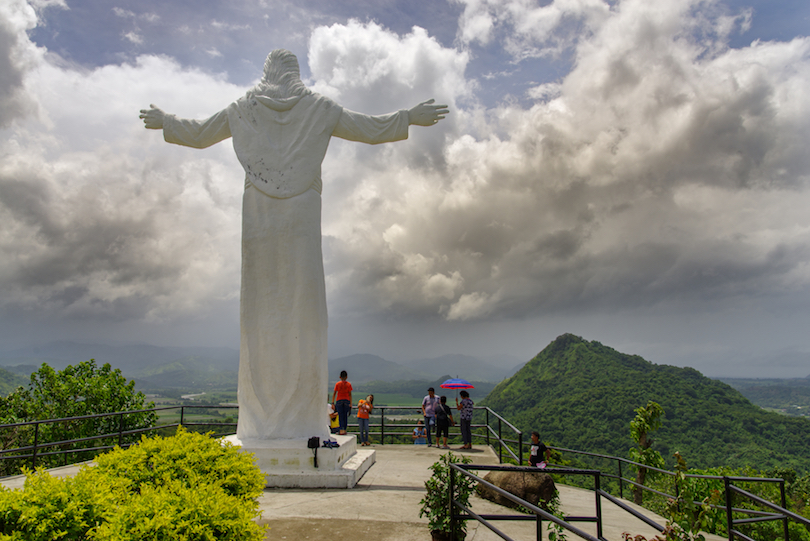
Located atop the appropriately named Mount Resurrection, this incredible monastery is a very popular destination with both locals and tourists alike. Its majestic Jesus Christ statue is the undoubted highlight of what’s on show.
Towering to a height of 30 feet, Christ’s outstretched arms welcome visitors to the Monasterio de Tarlac. From the peaceful gardens surrounding the church, you have some lovely views out over the picturesque Zambales Mountain Range.
While its scenic setting and splendid statue are what many people come for, the interior of the monastery houses a very important relic which is believed to be a remnant of the cross upon which Christ was crucified.
Although the fragment of the True Cross is not all that much to look at, lots of pilgrims come here and venerate the holy site. The monastery’s peaceful mountaintop setting certainly makes it the perfect place for some quiet reflection.
5. Dingalan [SEE MAP]
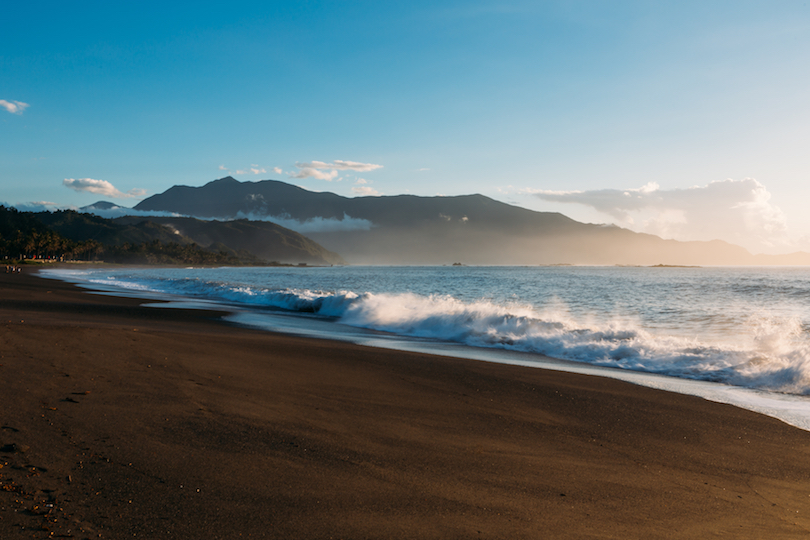
Lying alongside a delightful bay of the same name, Dingalan is a breathtakingly beautiful part of Central Luzon to visit. The municipality is awash with stunning scenery and landscapes for you to explore. While its wild and rugged coastline is exhilarating to surf or swim along, its interior is equally enchanting. Among its towering mountains, you can find cavernous caves, gushing rivers, and sparkling waterfalls.
As such, it really is an outdoor lover’s dream, and there are loads of lovely beaches to kick back and relax on if you simply want to bask in the magnificent scenery. While there isn’t all that much for you to do in town, its delightful setting amongst the Sierra Madre Mountains and the abundance of nature nearby means that you’ll never get bored.
4. Corregidor Island [SEE MAP]
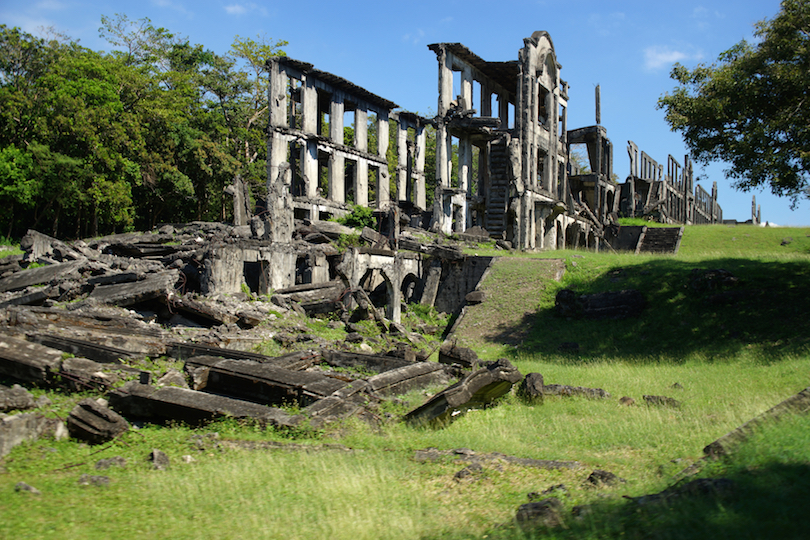
With lots of interesting historical sights to explore and a wealth of excellent woodland paths and coastal trails for you to hike or cycle along, Corregidor Island is well worth visiting when in Central Luzon.
Due to its strategic location at the entrance to Manila Bay, Corregidor has long been fortified. Many people now visit to see Fort Mills and the various anti-aircraft artillery batteries that were erected to protect the Philippines’s capital during the Second World War.
While the crumbling fortifications, memorials, and WWII sights are what make Corregidor Island one of the most popular tourist destinations in the country, its spectacular scenery is also well worth checking out.
3. Pilar [SEE MAP]
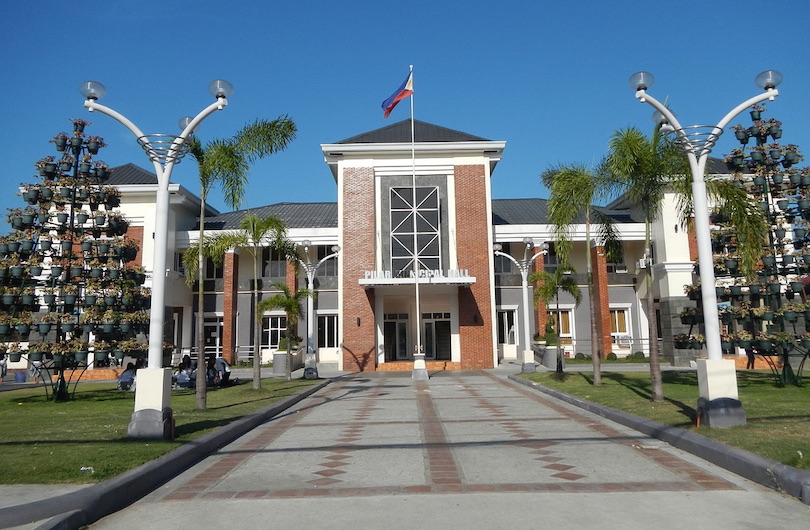
Although there is not all that much to see or do in the town of Pilar, there are some interesting historic sights to discover. The municipality itself lies not far away from Bataan National Park and Mount Mariveles, both of which boast some astounding natural wonders.
The main attraction in Pilar is the Mount Samat National Shrine, which was built to honor and remember the brave Filipino and American soldiers who fought in the Second World War. The enormous cross certainly does look impressive.
Besides that, the Flaming Sword shrine and Our Lady of the Pilar Parish Church are the main noteworthy sites to see in town, while the small fishing villages and ports along the coast are also well worth a visit; they are very picturesque with a laidback feel.
2. Mount Pinatubo [SEE MAP]
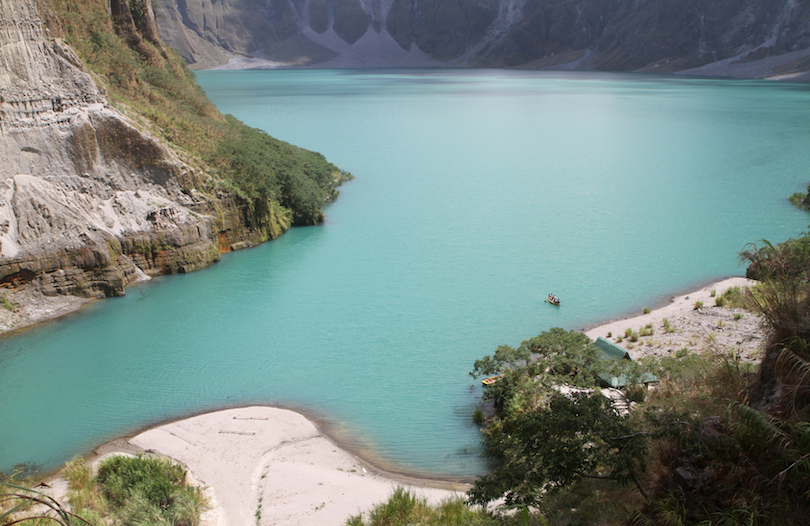
Simply awe-inspiring to look at, Mount Pinatubo is a must-visit when in Central Luzon. While the majestic mountains and volcanoes that dot the landscape are breathtakingly beautiful, it is the glimmering crater lake that lies at their heart that is the undoubted star of the show.
Hemmed in by towering peaks, the turquoise waters shimmer and gleam beneath the midday sun, and the color of the lake remarkably changes throughout the year, depending on the season.
Formed over millennia, the volcanic region makes for some beautiful hiking. Lots of mountaineers come to Mount Pinatubo to climb its various peaks. One of the most spectacular natural sights in the Philippines, Mount Pinatubo will set your heart racing.
1. Baler [SEE MAP]
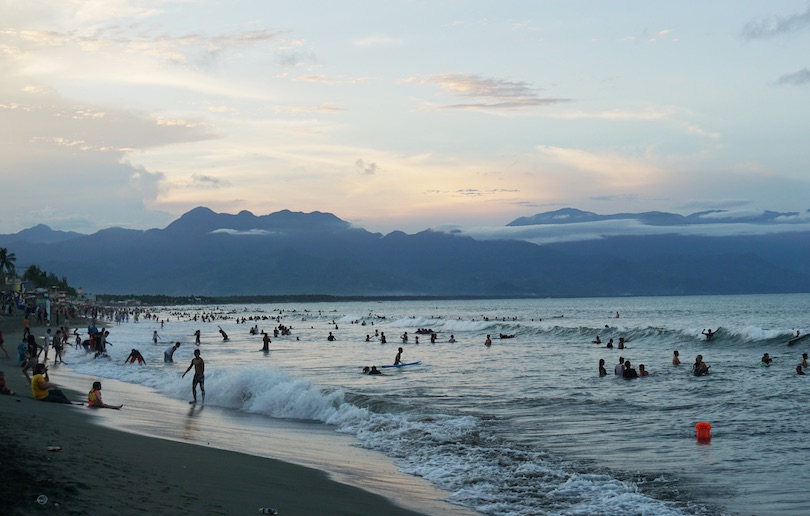
Lined by beautiful palm trees and overlooked by majestic mountains off in the distance, the small town of Baler is a very laidback place to visit, and the scenery on show is drop-dead gorgeous.
Famed for its white sand beach and surfing spots that appeared in the iconic film Apocalypse Now, Baler truly is blessed when it comes to its scenic setting. If you’re up for some exploring, the surrounding area has some wonderful beaches and waterfalls.
Despite being founded all the way back in 1609, there aren’t any historical or cultural attractions of note in the town. Most people simply come to kick back and relax on the beach or take to the waves and surf all day in the sun; it’s the perfect destination for sun-worshippers and beach lovers.
Share this post:
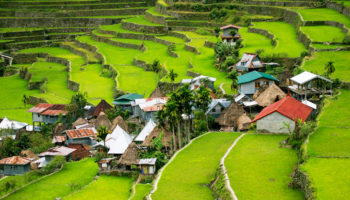
11 Top Destinations in Northern Luzon, Philippines
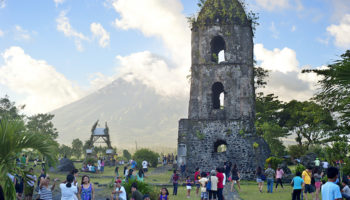
10 Top Destinations in Southern Luzon, Philippines
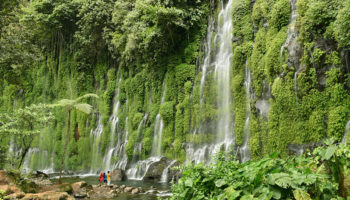
10 Largest Islands in the Philippines
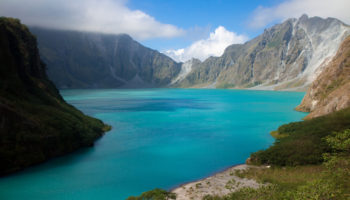
8 Most Beautiful Regions in the Philippines
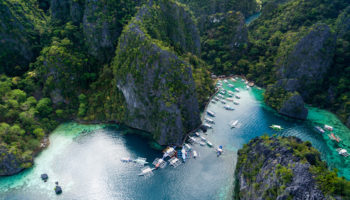
9 Best Places to Visit in Palawan
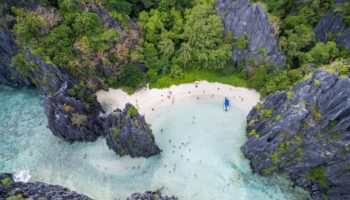
10 Best Beaches in the Philippines
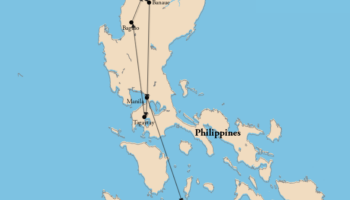
How to Spend 2 Weeks in the Philippines: DIY Itinerary
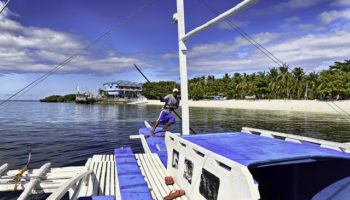
10 Top Tourist Attractions in the Philippines
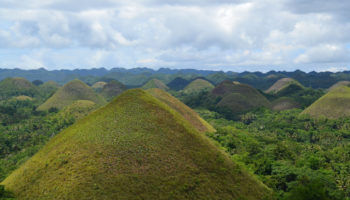
10 Best Places to Visit in the Philippines
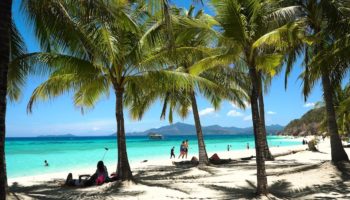
17 Best Islands in the Philippines
Reader interactions, leave a reply cancel reply.
Your email address will not be published. Required fields are marked *
This site uses Akismet to reduce spam. Learn how your comment data is processed .
- Philippines
The Best Attractions In Mimaropa
- 1. Puerto Princesa Underground River Puerto Princesa Puerto Princesa International Airport is an airport serving the general area of Puerto Princesa, located in the province of Palawan in the Philippines. It is classified as an international airport by the Civil Aviation Authority of the Philippines. The airport is the main gateway to the Puerto Princesa Underground River, a UNESCO World Heritage Site and one of the New 7 Wonders of Nature. From Wikipedia , the free encyclopedia.
- 2. Kayangan Lake Coron
- 3. Small Lagoon El Nido
- 4. Nacpan Beach El Nido
- 5. Honda Bay Puerto Princesa Honda Bay is a bay on the eastern shore of the island of Palawan near Puerto Princesa City in the southwestern Philippines. The bay is used for both subsistence and commercial fisheries and recreation. Boats can be rented for the day and used for travel to nearby islands, many less than 45 minutes from the shore by boat. Honda Bay is ideal for snorkeling. Starfish are commonly found near islands such as Starfish Island. Puerto Princesa is the nearest port city, and is accessible by plane. From 1953 to 1976 the nearby Palawan Quicksilver Mine used mine tailings from their ore extraction processes to produce a jetty at Honda Bay. The village of Sitio Honda Bay was erected on these mine tailings. Environmental studies indicate that some residents of the village and elsewhere near the mine hav... From Wikipedia , the free encyclopedia.
- 6. Big Lagoon El Nido
- 7. Las Cabanas Beach El Nido
- 8. Banol Beach Coron
- 9. Twin Lagoon Coron
- 10. Tubbataha Reef Puerto Princesa The Tubbataha Reefs Natural Park is a protected area of the Philippines located in the middle of the Sulu Sea. The marine and bird sanctuary consists of two huge atolls and the smaller Jessie Beazley Reef covering a total area of 97,030 hectares . It is located 150 kilometres southeast of Puerto Princesa City, the capital of Palawan province. The uninhabited islands and reefs are part of the island municipality of Cagayancillo, Palawan, located roughly 130 kilometres to the northeast of the reef.In December 1993, the UNESCO declared the Tubbataha Reefs National Park as a World Heritage Site as a unique example of an atoll reef with a very high density of marine species; the North Islet serving as a nesting site for birds and marine turtles. The site is an excellent example of a pristine co... From Wikipedia , the free encyclopedia.
- 11. Seven Commando Beach El Nido
- 12. Hidden Beach El Nido
- 13. Secret Lagoon Beach El Nido
- 14. Coron Bay Coron Coron is the third-largest island in the Calamian Islands in northern Palawan in the Philippines. The island is part of the larger municipality of the same name. It is about 170 nautical miles southwest of Manila and is known for several Japanese shipwrecks of World War II vintage. Because of its unique ecological features, the entire area is protected by several legal proclamations.The island and surrounding fishing grounds are part of the ancestral domain of the indigenous Tagbanwa people, officially designated such on June 5, 1998. Known as Calis among the Tagbanwas and Coronians, its tribal chieftain is Rodolfo Aguilar I. The island comprises two barangays of the municipality of Coron: Banuang Daan and Cabugao. From Wikipedia , the free encyclopedia.
- 15. Mitra Farm Puerto Princesa Ramon Villarosa Mitra Jr. was a Filipino statesman, diplomat, and pro-democracy activist. From Wikipedia , the free encyclopedia.
Mimaropa Videos
12 best tourist attractions in oriental mindoro philippines, 12 best tourist attractions in occidental mindoro philippines, occidental mindoro tourist attractions: 10 top places to visit, 12 best tourist attractions in marinduque island philippines, palawan tourist attractions: 15 top places to visit, marinduque tourist attractions: 12 top places to visit, mimaropa region, things to do in puerto princesa - must do if you are in palawan, best tourist spots in san jose occidental mindoro, the best hotels in palawan, philippines, places in mimaropa.
- Busuanga Town
- Cuyo Island
- Marinduque Island
- Port Barton
Regions in Mimaropa
- Palawan Province
- Puerto Princesa
- Romblon Province
Near By Places
Thank you for visiting nature.com. You are using a browser version with limited support for CSS. To obtain the best experience, we recommend you use a more up to date browser (or turn off compatibility mode in Internet Explorer). In the meantime, to ensure continued support, we are displaying the site without styles and JavaScript.
- View all journals
- My Account Login
- Explore content
- About the journal
- Publish with us
- Sign up for alerts
- Open access
- Published: 17 May 2024
Understanding attractions’ connection patterns based on intra-destination tourist mobility: A network motif approach
- Ding Ding 1 , 2 ,
- Yunhao Zheng 1 , 2 ,
- Yi Zhang 1 , 2 &
- Yu Liu ORCID: orcid.org/0000-0002-0016-2902 1 , 2
Humanities and Social Sciences Communications volume 11 , Article number: 636 ( 2024 ) Cite this article
1 Altmetric
Metrics details
- Business and management
- Complex networks
- Science, technology and society
Tourist movement patterns among attractions are complex and variable, and understanding such patterns can help manage tourist destinations more effectively. However, previous studies on tourist movement utilising complex networks have not explored the network motif approach comprehensively. Therefore, we adopted a network motif approach using social media data to extract and analyse motifs in a city network. This study analyses the attractions corresponding to the nodes in each motif, revealing the connection patterns between these attractions. We also discuss motifs between attractions with different types and titles. Popular attractions play a significant role in a local network while other attractions serve distinct functions within the network. This study’s findings enhance the significance of network motifs in examining tourist movement and deepen the understanding of recurring movement patterns between attractions. Moreover, they assist managers in developing policy tools for intelligent tourism destination marketing and planning that cater to tourists’ needs.
Similar content being viewed by others

Entropy, irreversibility and inference at the foundations of statistical physics

Network of large pedigrees reveals social practices of Avar communities

Spending at least 120 minutes a week in nature is associated with good health and wellbeing
Introduction.
Tourism has emerged as a leading economic activity worldwide, surpassing certain traditional industries and serving as a pivotal catalyst for international and regional economic growth. Specifically, urban tourism constitutes the cornerstone of contemporary tourism and has reached an advanced stage of competitive growth (Cárdenas-García et al., 2024 ; W. Su et al., 2003 ). Tourism has generated business prospects for numerous companies within renowned tourist cities such as Paris, New York, and Tokyo, simultaneously creating many employment opportunities for the urban population and infusing consistent economic vibrancy into such destinations (Hassan, 2000 ). Contemporary tourists’ movements in cities are no longer bound by rigid schedules or fixed itineraries, and their temporal and spatial flexibility is highlighted by their mobility patterns. John Urry’s ‘new mobility paradigm’ focuses on such changing nature of mobility (Korstanje, 2018 ; Merriman, 2012 ; Tzanelli, 2021 ; Urry ( 2008 )).
The rapid development of information and communication technologies has led to the widespread popularisation of mobile terminal devices equipped with positioning technology. The large amount of user location data collected by these devices has significantly enhanced our understanding of tourist mobility over the past two decades (Chen et al., 2022 ; Chuang, 2023 ; Jiang & Phoong, 2023 ; Leng et al., 2021 ; Nguyen & Nguyen, 2023 ; Park et al., 2023 ; Xu et al., 2024 ). By leveraging these datasets, diverse research methods and theories have been used to investigate tourist mobility, including geographic information systems (Lau & McKercher, 2006 ), time geography (Grinberger et al., 2014 ; Xiao-Ting & Bi-Hu, 2012 ), and Markov chains (Vu et al., 2015 ; Xia et al., 2009 ). Tourism researchers have attempted to understand the essence of tourist mobility because it plays a key role in attraction marketing, event planning, and the management and design of attractions in cities. Understanding tourist mobility with a city as a single destination can help managers make refined decisions compared to tourist movement on a larger scale, such as movement between destinations. Notably, a prevalent trend involves the aggregation of individual-level mobility data into networks, which serve as a basis for analysing the topological structure of attraction systems (Vu et al., 2015 ).
Tourist mobility data correspond to a network structure in which tourist attractions are nodes and the spatial movement between two attractions represents bonds (Kang et al., 2018 ). Consequently, network analysis is a data mining technique that has been widely used to extract the connection patterns established between attractions as tourists move through a geographical space (García-Palomares et al., 2015 ; Han et al., 2018 ; Leung et al., 2012 ; Mou et al., 2020a ; Peng et al., 2016 ; Xu et al., 2022 ; Zeng, 2018 ). Understanding the network characteristics of tourist attractions has practical implications for the competitiveness, management, and planning of tourist attractions (Stienmetz & Fesenmaier, 2015 ).
Nevertheless, most current literature employing social network analysis relies on descriptive measurements to analyse tourist mobility patterns. However, this approach hampers the assessment of the reliability and validity of the identified patterns (Park & Zhong, 2022 ). This study emphasises the concept of network motifs. These motifs are characterised as recurring and statistically significant subgraphs within a larger graph. As a crucial research task in complex network theory (Ahmed et al., 2017 ), motifs reveal functional properties based on the structural traits of network systems. Examining motifs in tourism networks enhances the understanding of how destinations are connected, how tourists move between destinations and how tourism policies affect network structure and dynamics. Moreover, in comparison with the travel motifs applied in previous studies (Park & Zhong, 2022 ; Yang et al., 2017 ), network motifs provide greater insight into individual tourist mobility at the aggregation level. Consequently, motifs can be useful in identifying the most influential or central destinations in tourism networks.
In summary, this study answers the following three questions: (1) What types of motifs do attractions constitute? (2) How are motifs linked to specific attractions? (3) How do motifs relate to attraction attributes? As the first study to use network motifs to examine tourist movement in a group manner, we select Suzhou City as the case study area and adopt social media data to extract tourists’ movements, which makes it easy to connect the nodes of the network with specific attractions. This paper proceeds as follows: The Literature Review section, as its name implies, presents a review of relevant studies on tourist mobility and network motifs. The Methodology section presents the dataset used in this study and the motif discovery method that we used to analyse it. The Results section presents an analysis of the results of motif discovery. In the Discussion section, we discuss this study’s results and implications for tourism. The Conclusion section presents the conclusions of the study.
Literature review
Research on network motifs.
Network motifs are defined as patterns of interconnections occurring in complex networks at numbers that are significantly higher than those occurring in randomised networks (Milo et al., 2002 ). Motifs can characterise the dynamic and functional behaviour of a network, therefore enabling the classification of networks based on statistical analysis (Roy et al., 2023 ). Network motifs have practical implications for social relationships, protein complexes, and information infrastructures (Yu et al., 2020 ). Current methods for discovering network topics can be divided into two categories: network-centric and motif-centric approaches. Network-centric methods enumerate all subgraphs in a network, such as Mfinder (Kashtan et al., 2002 ), FanMod (Wernicke & Rasche, 2006 ), Kavosh (Kashani et al., 2009 ) and G-tries (Ribeiro & Silva, 2010 ). Conversely, approaches such as Grochow (Grochow & Kellis, 2007 ) and MODA (Omidi et al., 2009 ) are motif-centric. Based on subgraph symmetry, motif-centric methods search for a single query graph and then map frequencies rather than enumerate them.
Regarding the application of complex network science in the field of tourism, previous studies examine tourist flow networks from the perspective of inter-destination (Liu et al., 2017 ; Peng et al., 2016 ; Shih, 2006 ; Wang et al., 2020 ) and intra-destination (Gao et al., 2022 ; Hwang et al., 2006 ; Leung et al., 2012 ; Mou et al., 2020 ; Zeng, 2018 ; Zheng et al., 2021 ). Summarising these previous studies, two common types of metrics can be identified: network- and node-based metrics. Network-based indicators include density, efficiency, diameter, average shortest path, average clustering coefficient, and centralisation. Node-based metrics include degree (out and in), degree centrality (out and in), closeness centrality, and betweenness centrality. Furthermore, network structure analysis methods, such as structural holes and core-periphery analyses, have also been employed.
Although motif discovery is a crucial research area in network science, its application to tourism has been relatively limited. Several studies have been at the forefront of applying network motifs to the study of human mobility (Cao et al., 2019 ; Schneider et al., 2013 ; R. Su et al., 2020 ). In contrast to concentrating solely on subgraphs within mobility networks, researchers have introduced the concept of travel motifs, therefore expanding motifs from topological spaces to include temporal and semantic dimensions (Yang et al., 2017 ). To the best of our knowledge, this tourism network motif was first mentioned in a global tourism network study (Lozano & Gutiérrez, 2018 ). Several network motifs including transitive feedforward loops and different one and two mutual-dyads subgraphs, have been identified. Furthermore, a study conducted in South Korea introduced a network motif algorithm to examine the interconnections of travel patterns between places within the context of tourism (Park & Zhong, 2022 ), and disregarded only the spatial behaviour of local tourists. Moreover, because cell towers collect mobile sensor data, it is challenging to accurately determine the precise locations of mobile users and the tourist attractions corresponding to those specific locations. Therefore, this study employs social media data and links each tourist’s spatial behaviour to a corresponding attraction, therefore revealing the connection patterns among attractions.
Tourist mobility and network analysis
Tourist mobility encompasses tourists’ flow, movement, dispersal, and travel patterns across space and time (Hardy et al., 2020 ; Shoval et al., 2020 ). The analysis of spatial movement is a significant aspect of tourist mobility (Oppermann, 1995 ). Understanding how tourists move through time and space has important implications for infrastructure and transportation development, product development, destination planning, and planning of new attractions, as well as the management of the social, environmental, and cultural impacts of tourism (Lew & McKercher, 2006 ). The verifiability and reliability of tourist mobility studies can be improved through quantitative analysis; however, the results of quantitative analyses are highly dependent on the scales on which their studies are used (Jin et al., 2018 ; Zhang et al., 2023 ).
Some intra-destination mobility studies have conducted analyses at the individual level. For instance, Fennell ( 1996 ) examined tourist movements on the Shetland Islands using measures of space, time, perception, region, and core-periphery. Lew and McKercher ( 2006 ) used an inductive approach based on urban transportation to identify explanatory factors that influence tourist mobility within a destination. Early research favoured abstract methods based on fundamental tourist proposals. There is a general approach for modelling tourist mobility that is easy to reproduce, namely, the Markov model. Xia et al. ( 2009 ) used Markov chains to model tourist mobility as a stochastic process and calculated the probabilities of tourists’ movement patterns on an island. As a more practical and useful approach, using semi-Markov models is effective in deriving the probabilities of both tourist movement and the attractiveness of specific attractions (Xia et al., 2011 ). Furthermore, time geography is a conceptual framework used to describe and understand tourist mobility. Integrating time geography with geographic information systems tools, Grinberger et al. ( 2014 ) clustered tourists based on the time-space allocation measures of their behaviour to reveal tourists’ choices and the strategies they implemented within the constraints of time and space.
There is an increasing trend involving the aggregation of individual-level mobility data into networks as the basis for analysing the topological structure of attraction systems (Smallwood et al., 2011 ). Mobility patterns can be viewed as a network and are therefore subject to network analysis (Shih, 2006 ). Based on a core-periphery analysis of attraction networks, Zach and Gretzel ( 2011 ) analysed the structure of attraction networks and provided a strong and practical basis for technology design and tourism marketing. Leung et al. ( 2012 ) applied social network and content analyses to examine the most visited tourist attractions and main tourism movement patterns in Beijing during three distinct periods. Additionally, network methods are often used in conjunction with other analytical methods. For example, Liu et al. ( 2017 ) applied a quadratic assignment procedure to an attraction network to test the relationship between proximity and the attraction network determined by tourists’ free-choice movements. Another example is Mou et al. ( 2020a ), who integrated social network analysis with traditional quantitative methods to develop a novel research framework. Indicators such as the Annual Gini Index and Pearson correlation coefficient can also be helpful when analysing tourists’ spatiotemporal behaviour (Zheng et al., 2021 ).
Motif discovery algorithms are commonly applied to gene regulation networks, electronic circuits, and neurones (Yu et al., 2020 ). However, studies using motif discovery methods to examine study tourist mobility are limited. It is worth mentioning that there are studies that examine travel motifs (which are extended from topological spaces to temporal and semantic spaces) to ascertain tourist mobility patterns (Yang et al., 2017 ). In fact, the variation in travel mobility patterns depends not only on tourists’ different lengths of stay and the topological structures of travel mobility but also on the relative proportions of each travel mobility type (Park & Zhong, 2022 ). However, travel motifs can only reflect the movement patterns of individual tourists rather than the movement patterns at the aggregated-individual level, let alone serve as the basis for analysing the topological structure of an attraction network (Jin et al., 2018 ). To the best of our knowledge, no previous study has used network motifs to examine tourist mobility at the individual-aggregation level. Only Lozano and Gutiérrez ( 2018 ) applied the network motif analysis tool offered by UCINET 6.0 to analyse the top three global tourism flows. Therefore, this study argues that the use of network motif analysis not only fills a research gap regarding tourist mobility at the aggregation level but also provides theoretical support for planning and the design of tourist attraction networks.
Methodology
We selected Suzhou, China (Fig. 1a ) as the study area. Suzhou is located in eastern China, west of Shanghai, and has a population of five million residents. With its plentiful tourism resources, Suzhou received more than 100 million domestic visitors annually before the COVID-19 pandemic. Suzhou is well-known for its cultural and historical heritage. The most popular attractions in Suzhou are its classical gardens, which were included in the World Heritage List of the previous century. Suzhou’s ancient city attractions cover an area of 14 km 2 . In addition to these historical attractions, Suzhou has a natural landscape with lush mountains and gleaming lakes.
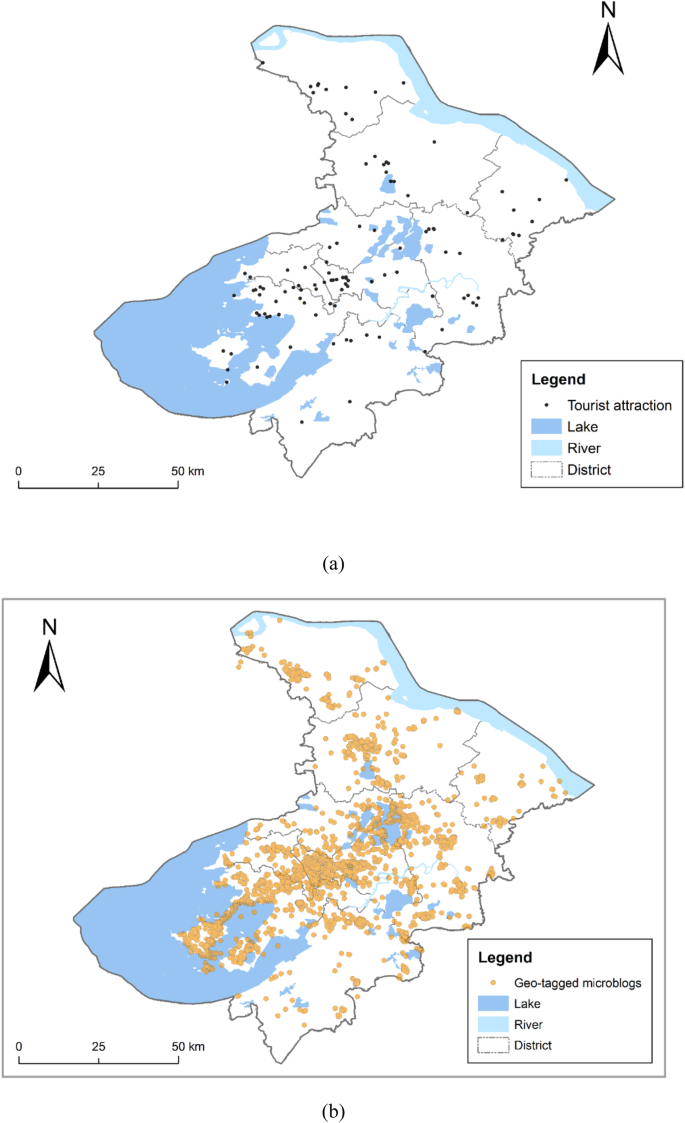
a The location of attractions in Suzhou b The geo-tagged microblogs in Suzhou.
Data collection and preprocessing
Social media data were primarily collected from location-based mobile phone applications. Sina Weibo, the Chinese equivalent of Twitter, is the most popular social media platform in China, with over 500 million active registered users who post 300 million microblogs daily (Kim et al., 2017 ). We used the application programming interface provided by Sina Weibo to crawl posts made in Suzhou from 12 April, 2012 to 31 October, 2016. The posts we crawled from the application programming interface contained various data about the users, including post identification (ID), user ID, post text, pictures, location information (longitude and latitude), and post time, as shown in Fig. 1b . Based on the user ID, we were also able to acquire users’ profile information while remaining compliant with user privacy regulations. User profile information includes registration location, gender, age, number of posts and fans, and ‘follows.’
However, only a portion of users were involved in tourism activities. We assumed that these tourists were not locals and that they had to return to their cities of residence after their trip. Referring to the double-filtration approach proposed by Su et al. ( 2020 ), we first filtered out local users based on the locations registered in their Weibo user profiles. In this study, the time difference between a user’s first and last post is defined as their length of stay. Referring to previous studies (Girardin et al., 2008 ; García-Palomares et al., 2015 ), we filtered out users who stayed longer than one month.
The purpose of tourism activities can be entertainment or relaxation; however, they can also be a part of official or business visits. Although official/business visits may also involve tourism activities, only visitors travelling to Suzhou of their own accord were considered tourists in our study. Therefore, during data preprocessing, we defined only users who posted microblogs within the tourist attractions shown in the Suzhou Tourism Bureau’s official list ( http://tjj.suzhou.gov.cn/ ) as tourists. Specifically, we used the coordinates recorded in the geo-tagged microblogs to determine whether a user had visited one of the attractions on the official list. After filtering out individuals based on the criteria described above, 234,049 Weibo microblogs were obtained from 54,712 tourists. Sorting these microblogs by time gave us the of tourists’ trajectories within the city. As a result, we could map these trajectories to the directional connections between attractions to establish, a network of attractions (Fig. 2 ).
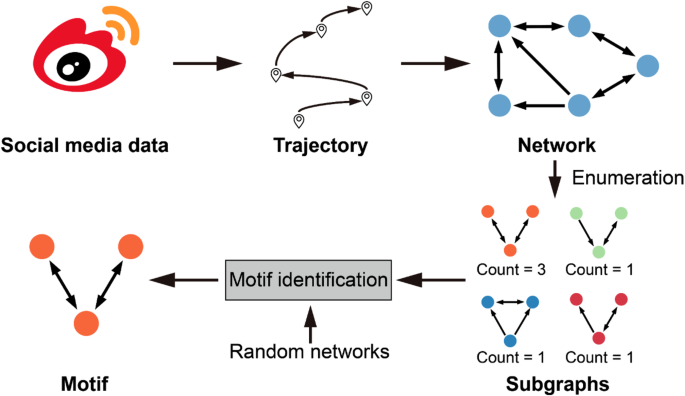
Framework of the network motif analysis.
Extracting attractions’ connection patterns using network motif analysis
Just as attractions are represented in networks as nodes and flows as edges, tourist mobility patterns can also be transformed into complex networks (Schneider et al., 2013 ). Therefore, we discovered all recurrent mobility patterns related to the motifs appearing in the tourist flow network. To accomplish this, we introduced a new algorithm (Kavosh) designed to find k-size network motifs with less memory and CPU time than those required for other algorithms. The Kavosh algorithm is based on counting all k-size subgraphs of a given graph (directed or undirected). As shown in Fig. 2 , the Kavosh algorithm consists of three steps: enumeration, random network generation, and motif identification. First, the algorithm enumerates all possible mobility patterns related to the subgraphs in the original network. The Kavosh algorithm groups the isomorphic subgraphs using the NAUTY algorithm. This optimisation enhances the overall process efficiency and minimises pattern redundancy. As not all patterns bear significance, the algorithm generates a large number of random networks and compares the frequency of occurrence of these patterns in all random networks. Lastly, the significance of each pattern in the input network is calculated for motif identification. Here, some statistical measures that generate probable motifs in the original network are introduced.
This is the simplest method for estimating the significance of a motif. For a given network, we assume that G p is a representative of an isomorphism class involved in that class. Frequency is defined as the number of occurrences of G p in the input network.
This measure reflects how randomly the class occurred in the input network. For the assumed motif G p , this measure is defined as:
This measure indicates the number of random networks in which a motif, G p , occurs more often than in the input network, divided by the total number of random networks. Therefore, the P -value ranges from 0 to 1. The smaller the P -value, the more significant the motif.
Therefore, the motifs found in the input network are available, including some related statistical measures. As mentioned in the previous step, three different measures are used in this algorithm. There are no exact thresholds for these measures to distinguish motifs; the more restricted the thresholds, the more precise the motif. According to previous experimental results (Milo et al., 2002 ), the following conditions can be used to describe a network motif:
Using 1000 randomised networks, the P -value is < 0.01.
The frequency is larger than four.
Using 1000 randomised networks, the Z-score is > 1.
According to the above conditions, aiming to be as precise as possible, the patterns with significant measures are those that describe the network motifs.
Extracted motifs of the tourist attraction network
The Sina Weibo data analysed in this study encompassed 104 attractions within Suzhou City (Fig. 1a ). According to the processing method described in the previous section, the data from Sina Weibo constituted a total of 2171 edges of the tourism network. When searching for k-motifs, the frequency of (k-1) motifs in the original network should be the same as that in the randomised network (Yu et al., 2020 ). In this study, motifs with more than four nodes did not meet the requirements for extraction; therefore, we extracted motifs with three and four nodes. We determined that a motif appeared in the network based on the criteria mentioned in the previous section. Consequently, we extracted three motifs for three-node motifs and six motifs for four-node motifs, as shown in Figs. 3 and 4 .
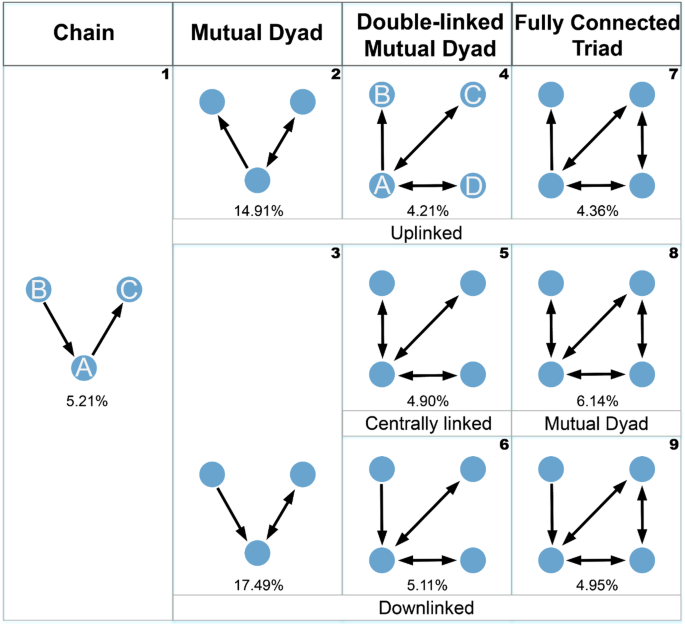
Topological types of tourism network motifs.
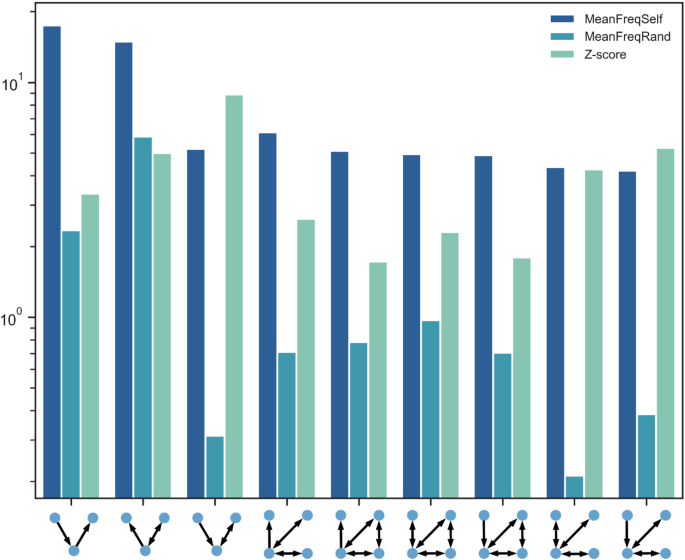
Frequency and Z-score of tourism network motifs.
Under each motif in Fig. 3 is the proportion of that motif within the network, while the ID of that motif is in the top-right corner of each cell. Each node in the graph also contains a corresponding label, as shown by the IDs of motifs 1 and 4. The node labels of the other motifs are similar. Therefore, we did not label them all to ensure the figure remained concise. Referring to the classification of motifs in previous studies (Costa et al., 2007 ; Yang et al., 2017 ), we divided motifs into four base classes: chain, mutual dyad, double-linked mutual dyad, and fully connected triad. The chain-class motif refers to tourists visiting three attractions sequentially without returning. Similarly, a double-linked mutual dyad motif means that tourists flow in both directions between two pairs of attractions. The fully connected triad motif refers to a pair of three attractions with any two pairs flowing in both directions.
Among them, the mutual dyad, double-linked mutual dyad, and fully connected triad have uplinked and downlinked variants in their main categories. For example, if node A of the mutual dyad sends tourists to another attraction, we use the term ‘uplinked’ to describe this motif, whereas if node A receives tourists from another attraction, we describe the motif as ‘downlinked’. By analogy, these naming rules can be extended to double-linked mutual dyads and fully connected triads. The centrally linked mutual dyad and fully connected triad with a mutual dyad are two more specific variants. The centrally linked mutual dyad is based on a core attraction surrounded by three nodes with mutual circulation; however, none of the three attractions are connected to each other. A fully connected triad with a mutual dyad constitutes one fully connected triad in which one node forms another mutual dyad.
Among the abovementioned nine motifs, those with IDs 1, 2, and 3 are three-node motifs, accounting for 37.61% of the total number of network subgraphs. This indicates that the flow of tourists between any three attractions in the tourism network is dominated by chaining. This suggests that there is an order for most connections among the three attractions’ patterns. The remaining six motifs of the four nodes accounted for 29.67%, with three motifs (those with IDs 4, 5, and 6) forming around the centre point in the lower left corner. The centrally linked motif corresponds to a movement pattern referred to as a ‘basecamp’ in previous studies (Lau & McKercher, 2006 ; Lue et al., 1993 ; Oppermann, 1995 ), in which tourists establish one attraction as their basecamp and leave to visit other places, only to return later. In the downlinked variant, this base camp appeared as a gateway attraction for visiting attractions B and C. The motifs with IDs 7, 8, and 9 were mainly structured as a fully connected triple attraction, which comprised three closely linked attractions where tourists can move freely. In addition to this triple attraction, we also identified a relationship between one attraction and one of three attractions, exhibiting relationships of receiving, conveying, and circulating with each other. Therefore, regarding the connection patterns of the four attractions, the function of the key attractions in it is both specific and vital.
Motif interpretation: Specific attractions
In this study, all calculated motifs were the local mobility patterns of tourists that occurred at high frequencies in the original tourist network. The following analysis was performed for the distribution of attractions on each node of the extracted motifs. We selected the node with the highest degree for each motif and counted the attractions appearing in that node for all subgraphs in the tourist network. The top three attractions with the highest frequency on the highest-degree node were selected according to their frequency, as shown in Table 1 . In the table, the highest-degree nodes are shown in orange.
Table 1 shows that the attractions Guanqian Street, Jinji Lake, and Pingjiang Road are the most highly placed nodes in the subgraph, indicating that these three attractions are in a relatively central position in the whole network. In other words, the network is organised around these three attractions, forming the vast majority of the local tourist movement patterns. Additionally, attractions such as Zhouzhuang and Hanshan Temple also play a key role in the local network. Zhouzhuang appears in the nodes of the motif as an attraction en route to other attractions, acting as a gateway. Generally, in motif patterns 3 and 9, tourists do not return after visiting Zhouzhuang but continue to visit attractions interconnected with Zhouzhuang, which is attributable to the long distance between Zhouzhuang and the urban area of Suzhou. The opposite is true for Hanshan Temple, whose corresponding motif patterns (2, 4, and 7) tend to be the attractions that tourists visited before they went to B through other attractions, implying that tourists all converged at that attraction before visiting other attractions. We further determined the top three attractions in node B: Tongli National Wetland Park, China Flower Botanical Garden, and Dabaidang Ecological Park. The common characteristic of these three attractions is that they all have multiple varieties of flowers with ornamental value and rich vegetation coverage, making them good places for hiking during spring.
Motif interpretation: Types and titles of attractions
In addition to exploring the nodes with the highest degree of motifs, this study examines the types and titles of attractions on each node. According to the classification proposed by another study in Suzhou (Xue & Zhang, 2020 ), attractions can be classified into natural, cultural, and commercial, according to their landscape type; they may also be classified as 5A, 4A and others according to their title (A tourist attraction with a ‘5A’ score implies that it has the most beautiful scenery, the best service and perfect facilities). Fig. 5 shows the distribution of attraction types on the nodes, Fig. 6 shows the distribution of attraction titles on the nodes, while the node labels in the lower right corner of each figure are used to refer to the relative positions of the nodes on each motif. We refer to these node labels in the subsequent paragraphs.
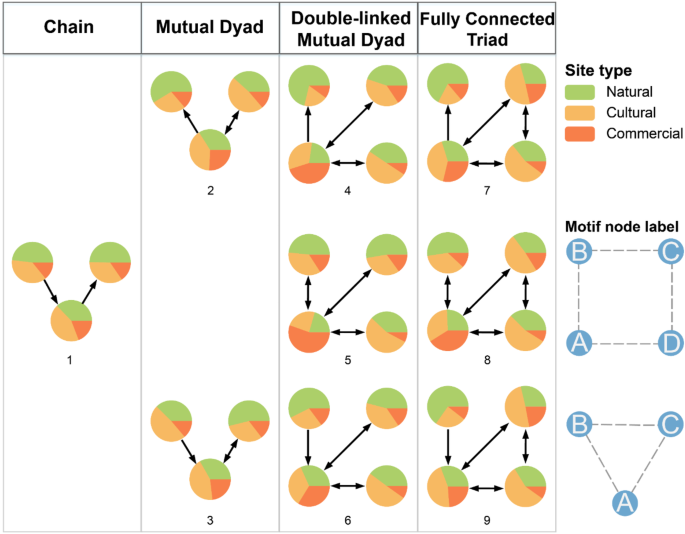
The attraction type of motif nodes.
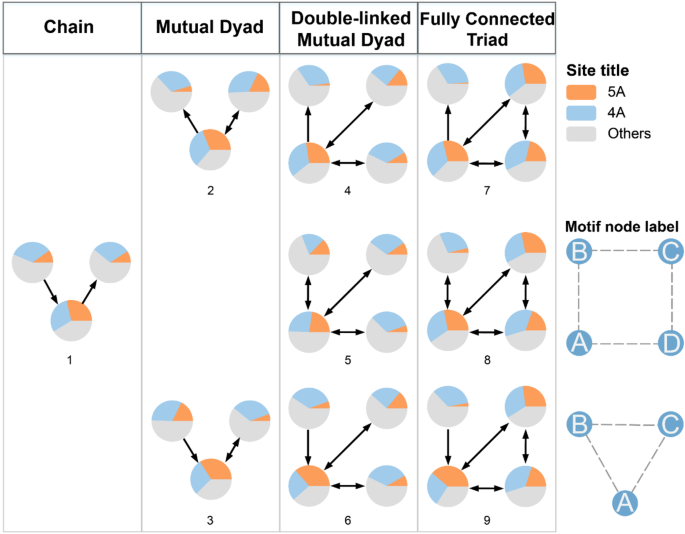
The attraction title of motif nodes.
Figures 5 and 6 show that the types of attractions on each node differ; however, the differences in the types of node attractions between each motif in each major category are relatively insignificant. This indicates that each major category of attraction connection pattern summarises a common class of tourists’ local movement patterns, while the attributes of each attraction in this movement pattern are fixed.
Types of attractions
In Fig. 5 , the distribution of the attraction types of the nodes differs insignificantly in the type of attraction for the chain-type motif. Regarding the mutual dyad type, the types of node A are still relatively balanced, whereas the types dominated by nodes B and C are different and exactly opposite. Specifically, node B of motif 2 is dominated by natural-type attractions, whereas node C has more than 50% cultural attractions. Conversely, motif 3 shows the opposite pattern. The double-linked mutual dyad exhibited more obvious characteristics. First, we observe that the proportions of nodes C and D attraction types of the three motifs are identical, with the main differences appearing in nodes A and B. Second, for IDs 4 and 5, node A’s commercial attractions exhibit a significantly high proportion, which highlights their role in aggregating tourists in the local network. In contrast, for motif 6, node A primarily serves as a transit node from B to C and D, while its proportion of commercial attractions is not notably high. Lastly, in the fully connected triad, the proportion of interconnected nodes in the three motifs remains consistent. Nodes C and D are dominated by cultural attractions, whereas node A, acting as a communication hub for other attractions, exhibits a more balanced distribution of types.
Titles of attractions
In Fig. 6 , the percentages of 5A and 4A attractions on nodes without attraction titles are significantly lower than those on nodes with famous attraction titles. Specifically, considering the percentage of attraction titles on each node, the difference in the percentage of B and C node levels for the chain-type motif is insignificant. Moreover, they are dominated by unpopular attractions. However, the percentage of A as a transit node for famous attractions is significantly higher than that of B and C. The situation of node A in the mutual Dyad type is similar to that of the chain type, with a higher percentage of famous attractions, whereas the situation is different for nodes B and C. Nodes B and C have the opposite ratio: when node B has a higher proportion of famous attractions, node C is dominated by non-famous attractions, and vice versa. Regarding the double-linked mutual dyad type, the proportion of famous attractions in node A is significantly higher than that in the other nodes. However, there is no significant difference in the percentage of attraction titles in the other nodes, regardless of whether it is a bidirectional flow with node A, and all of them are dominated by non-famous attractions. When there is a fully connected triad in the motif, the proportion of the three nodes that are fully connected as attractions with titles is very high, indicating that the flow of tourists between the 5A and 4A attractions is considerable. In contrast, most of the B nodes that are only connected to A nodes comprise non-famous attractions, indicating that attractions without good titles cannot establish a better connection with 5A and 4A.
We applied network motif analytics as a novel approach for exploring the local structure of tourist networks, based on social media data. The overall structural features of the network emerged from the local relational features. To comprehend the principles of tourist network formation, it is essential to consider not only the overall network perspective but also local network connections. The results showed that attractions play an important role in local networks and that this role is related to the type and level of attractions. Therefore, enhancing the future development of tourism in Suzhou hinges on strategically guiding attractions to fulfill their appropriate service functions within the destination city.
Tourist mobility patterns
This study employs the theory of motifs, which originated from complex network science, as an innovative approach to investigating tourist mobility patterns. Originally used in the field of biology, the network motif algorithm for complex networks was applied in this study to examine the relationships between overabundant tourism mobility patterns and the corresponding attractions. Unlike previous methods for mining travel motifs, the analysis results of motif analysis in the network cannot directly extract tourists’ travel itineraries in the city. The motif-based analysis method focuses more on the movement patterns of groups of tourists between several strongly associated attractions. Based on this characteristic, network motif analysis is more suitable for observing local phenomena.
For tourist movement in urban tourist destinations, a large directed graph can be constructed for tourist movement between attrations according to the concept of network science theory. By applying the motif extraction method to this graph, we can find that it is these simple repeating topologies that make up the overall network (Fig. 7 ). In this study, four classes and nine motifs effectively summarised the diverse mobility patterns. This implies that despite the diversity of their travel history, humans follow simple reproducible patterns (González et al., ( 2008 )). Understanding tourist mobility patterns enhances the comprehension of city destination systems and provides vital insights into city destination planning and development (Ashworth & Page, 2011 ).
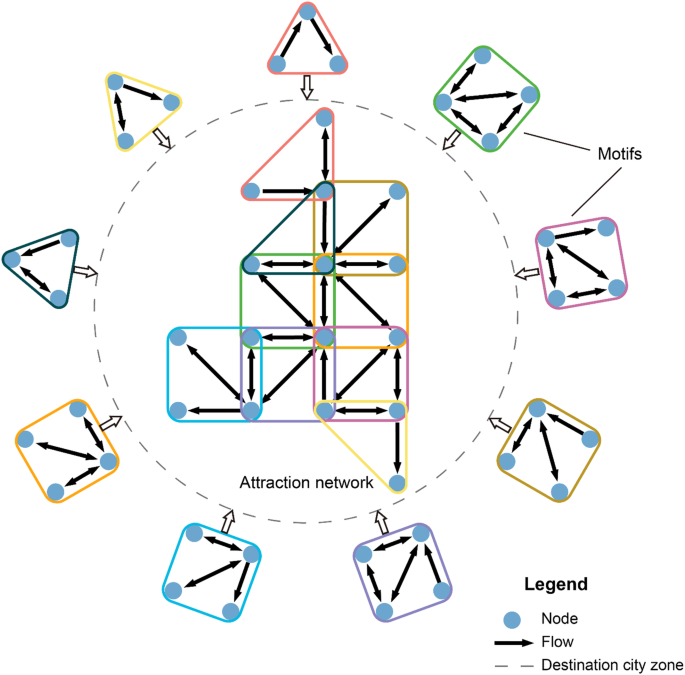
Motifs in attraction network.
Connection patterns between attractions
This study examines a tourist network’s connection patterns to identify attractions with distinct roles, including core, transit, and gateway attractions. Tourist attractions within destinations vary in significance, while the hierarchical structure of urban destination systems differs based on their appeal to tourists (Golledge, 1978 ). From a product-marketing standpoint, these findings help marketers understand the function of attractions in tourists’ travel itineraries and establish a foundation for the development of targeted tourism products. For example, for the core attractions, overall tourism planning should be carried out around them; for the identified transit attractions, more transportation routes should be planned for these attractions; for the gateway attractions, the hotel reception services and tourist guide services around these attractions should be enhanced. Nevertheless, the results underscore that the crucial nodes within the nine motifs are almost always composed of a few of the most renowned attractions. From a risk management perspective, an excessively concentrated destination may cause ‘overtourism’ (Peeters et al., 2018 ).
Implications for tourism management
Understanding tourists’ movement is essential for tourism managers to plan and implement effective sustainability strategies (Shi et al., 2017 ). The tourist network examined in this study reflects the movement of tourists among attractions, provides a novel approach to analyse tourist movement patterns within destinations and accurately depicts tourists’ digital footprint within destinations (Fan et al., 2024 ). The results show that although tourists’ detailed movement patterns among destinations are highly complex, local attractions’ connections in the network can be grouped into several patterns. This suggests that although tourists differ in preferences, there are also commonalities in their overall spatial behaviours, which helps enrich the group user profile of visiting tourists. Therefore, destinations can develop attractions and alternative attractions based on the analysis of tourist movement patterns by capturing popular travel routes (Vu et al., 2015 ).
Conclusions
As cities become centres of economic activity, new forms of urban tourism are becoming popular, while an increasing number of tourists are choosing cities as destinations to pursue novel, diverse, and personalised travel experiences (Füller & Michel, 2014 ). This study employs motif analysis in complex network science to elucidate tourist mobility patterns and depict the interconnections between attraction systems in Suzhou, China. We innovatively used actual attractions as network nodes and focused on attraction connection patterns to provide practical implications for destination management. The main conclusions are summarised as follows:
Referring to the motif discovery method known as Kavosh, we extracted nine motifs from a tourist network in Suzhou. These nine motifs can be categorised into four main classes: chain, mutual dyad, double-linked mutual dyad, and fully connected triad.
Specific attractions represented by nodes in the motifs are explored comprehensively. Suzhou’s network is organised around three attractions, namely, Guanqian Street, Jinji Lake and Pingjiang Road, which form most of the local attractions’ connection patterns. Attractions such as the Zhouzhuang and the Hanshan Temple perform specific functions in the network.
The types and proportions of attractions were investigated by visualising local tourist mobility patterns in the network. The results showed that nodes with a higher degree of motifs were generally well-known attractions with titles such as 5A or 4A and were dominated by cultural and commercial attractions.
These results provide a new analytical methodological framework for examining connection patterns in local attraction systems, as well as a basis for the management of attractions within urban tourism destinations.
Despite the theoretical insights and practical applications of this study, there are some limitations that must be acknowledged. For example, social media data are prone to various biases—e.g. the popularity of specific platforms among users—while the amount of data may vary by country, year and population. The bias associated with highly engaged users can result in the overrepresentation of such populations (Encalada-Abarca et al., 2023 ). Additionally, the data used in this study mainly reflect tourists’ spatial behaviour within a city. Because tourists’ spatial behaviour patterns within different destinations differ, it is necessary to use tourism networks within multiple destinations to establish comparisons in subsequent studies, which could help generalise this study’s findings. Future work could further explore the mechanisms of attraction selection by the mobility motifs, such as the fact that tourists are looking to maximise satisfaction when planning their itineraries.
Data availability
The datasets generated during and/or analysed during the current study are available from the corresponding author on reasonable request.
Ahmed NK, Neville J, Rossi RA, Duffield NG, Willke TL (2017) Graphlet decomposition: Framework, algorithms, and applications. Knowl Inf Syst 50(3):689–722. https://doi.org/10.1007/s10115-016-0965-5
Article Google Scholar
Ashworth G, Page SJ (2011) Urban tourism research: Recent progress and current paradoxes. Tour Manag 32(1):1–15. https://doi.org/10.1016/j.tourman.2010.02.002
Cao J, Li Q, Tu W, Wang F (2019) Characterizing preferred motif choices and distance impacts. PLOS ONE 14(4):e0215242. https://doi.org/10.1371/journal.pone.0215242
Article CAS PubMed PubMed Central Google Scholar
Cárdenas-García PJ, Brida JG, Segarra V (2024) Modeling the link between tourism and economic development: evidence from homogeneous panels of countries. Humanit Soc Sci Commun 11(1):1–12. https://doi.org/10.1057/s41599-024-02826-8
Chen J, Becken S, Stantic B (2022) Harnessing social media to understand tourist travel patterns in muti-destinations. Ann Tour Res Empir Insights 3(2):100079. https://doi.org/10.1016/j.annale.2022.100079
Chuang CM (2023) The conceptualization of smart tourism service platforms on tourist value co-creation behaviours: an integrative perspective of smart tourism services. Humanit Soc Sci Commun 10(1):367. https://doi.org/10.1057/s41599-023-01867-9
Costa Lda F, Rodrigues FA, Travieso G, Villas Boas PR (2007) Characterization of complex networks: A survey of measurements. Adv Phys 56(1):167–242. https://doi.org/10.1080/00018730601170527
Article ADS Google Scholar
Encalada-Abarca L, Ferreira CC, Rocha J (2023) Revisiting city tourism in the longer run: An exploratory analysis based on LBSN data. Curr Issues Tourism:1–16. https://doi.org/10.1080/13683500.2023.2182669
Fan C, Yang Y, Mostafavi A (2024) Neural embeddings of urban big data reveal spatial structures in cities. Humanit Soc Sci Commun 11(1):1–15. https://doi.org/10.1057/s41599-024-02917-6
Fennell DA (1996) A tourist space-time budget in the Shetland Islands. Ann Tour Res 23(4):811–829. https://doi.org/10.1016/0160-7383(96)00008-4
Füller H, Michel B (2014) Stop Being a Tourist!” new dynamics of urban tourism in Berlin-Kreuzberg. Int J Urban Reg Res 38(4):1304–1318. https://doi.org/10.1111/1468-2427.12124
Gao J, Peng P, Lu F, Claramunt C (2022) A multi-scale comparison of tourism attraction networks across China. Tour Manag 90:104489. https://doi.org/10.1016/j.tourman.2022.104489
García-Palomares JC, Gutiérrez J, Mínguez C (2015) Identification of tourist hot spots based on social networks: A comparative analysis of European metropolises using photo-sharing services and GIS. Appl Geogr 63:408–417. https://doi.org/10.1016/j.apgeog.2015.08.002
Girardin F, Calabrese F, Dal Fiore FD, Ratti C, Blat J (2008) Digital footprinting: Uncovering tourists with user-generated content. IEEE Pervas Comput 7(4):36–43. https://doi.org/10.1109/MPRV.2008.71
Golledge RG (1978) Representing, interpreting, and using cognized environments. Pap Reg Sci Assoc 41(1):168–204. https://doi.org/10.1007/BF01936415
Golledge RG (1997) Spatial behavior: A geographic perspective. Guilford Press, New York
Google Scholar
González MC, Hidalgo CA, Barabási AL (2008) Understanding individual human mobility patterns. Nature 453(7196):779–782. https://doi.org/10.1038/nature06958
Article ADS CAS PubMed Google Scholar
Grinberger AY, Shoval N, McKercher B (2014) Typologies of tourists’ time–space consumption: A new approach using GPS data and GIS tools. Tour Geogr 16(1):105–123. https://doi.org/10.1080/14616688.2013.869249
Grochow JA, Kellis M (2007) Network motif discovery using subgraph enumeration and symmetry-breaking. In: Speed T, Huang H (eds), Research in computational molecular biology. Springer, Berlin, p 92–106. https://doi.org/10.1007/978-3-540-71681-5_7
Han H, Kim S, Otoo FE (2018) Spatial movement patterns among intra-destinations using social network analysis. Asia Pac J Tour Res 23(8):806–822. https://doi.org/10.1080/10941665.2018.1493519
Hardy A, Birenboim A, Wells M (2020) Using geoinformatics to assess tourist dispersal at the state level. Ann Tour Res 82:102903. https://doi.org/10.1016/j.annals.2020.102903
Hassan SS (2000) Determinants of market competitiveness in an environmentally sustainable tourism industry. J Travel Res 38(3):239–245. https://doi.org/10.1177/004728750003800305
Hwang Y-H, Gretzel U, Fesenmaier DR (2006) Multicity trip patterns. Ann Tour Res 33(4):1057–1078. https://doi.org/10.1016/j.annals.2006.04.004
Jiang C, Phoong SW (2023) A ten-year review analysis of the impact of digitization on tourism development (2012–2022). Humanit Soc Sci Commun. 10:665. https://doi.org/10.1057/s41599-023-02150-7
Jin C, Cheng J, Xu J (2018) Using user-generated content to explore the temporal heterogeneity in tourist mobility. J Travel Res 57(6):779–791. https://doi.org/10.1177/0047287517714906
Kang S, Lee G, Kim J, Park D (2018) Identifying the spatial structure of the tourist attraction system in South Korea using GIS and network analysis: An application of anchor-point theory. J Destin Mark Manag 9:358–370. https://doi.org/10.1016/j.jdmm.2018.04.001
Kashani ZRM, Ahrabian H, Elahi E, Nowzari-Dalini A, Ansari ES, Asadi S, Mohammadi S, Schreiber F, Masoudi-Nejad A (2009) Kavosh: A new algorithm for finding network motifs. BMC Bioinforma 10(1):1–12
Kashtan N, Itzkovitz S, Milo R, Alon U (2002). Mfinder tool guide: Technical report
Kim S-E, Lee KY, Shin SI, Yang S-B (2017) Effects of tourism information quality in social media on destination image formation: The case of Sina Weibo. Inf Manag 54(6):687–702. https://doi.org/10.1016/j.im.2017.02.009
Korstanje ME (2018) The theory of mobilities: a critical analysis. In: The Mobilities Paradox. Edward Elgar Publishing, Cheltenham, UK, p 10-37. https://doi.org/10.4337/9781788113311.00005
Lau G, McKercher B (2006) Understanding tourist movement patterns in a destination: A GIS approach. Tour Hosp Res 7(1):39–49. https://doi.org/10.1057/palgrave.thr.6050027
Leng Y, Babwany NA, Pentland A (2021) Unraveling the association between socioeconomic diversity and consumer price index in a tourism country. Humanit Soc Sci Commun 8:157. https://doi.org/10.1057/s41599-021-00822-w
Leung XY, Wang F, Wu B, Bai B, Stahura KA, Xie Z (2012) A social network analysis of overseas tourist movement patterns in Beijing: The impact of the Olympic Games. Int J Tour Res 14(5):469–484. https://doi.org/10.1002/jtr.876
Lew A, McKercher B (2006) Modeling tourist movements. Ann Tour Res 33(2):403–423. https://doi.org/10.1016/j.annals.2005.12.002
Liu B, Huang S, Fu H, Fu H, Fu H (2017) An application of network analysis on tourist attractions: The case of Xinjiang, China. Tour Manag 58:132–141. https://doi.org/10.1016/j.tourman.2016.10.009
Lozano S, Gutiérrez E (2018) A complex network analysis of global tourism flows. Int J Tour Res 20(5):588–604. https://doi.org/10.1002/jtr.2208
Lue C-C, Crompton JL, Fesenmaier DR (1993) Conceptualization of multi-destination pleasure trips. Ann Tour Res 20(2):289–301. https://doi.org/10.1016/0160-7383(93)90056-9
Merriman P (2012) Mobility, space and culture. Routledge, New York. https://doi.org/10.4337/9781800881426
Milo R, Shen-Orr S, Itzkovitz S, Kashtan N, Chklovskii D, Alon U (2002) Network motifs: Simple building blocks of complex networks. Science 298(5594):824–827. https://doi.org/10.1126/science.298.5594.824
Mou N, Zheng Y, Makkonen T, Yang T, Tang J, Song Y (2020) Tourists’ digital footprint: The spatial patterns of tourist flows in Qingdao, China. Tour Manag 81:104151. https://doi.org/10.1016/j.tourman.2020.104151
Nguyen HTT, Nguyen TX (2023) Understanding customer experience with Vietnamese hotels by analyzing online reviews. Humanit Soc Sci Commun 10:618. https://doi.org/10.1057/s41599-023-02098-8
Omidi S, Schreiber F, Masoudi-Nejad A (2009) MODA: An efficient algorithm for network motif discovery in biological networks. Genes Genet Syst 84(5):385–395. https://doi.org/10.1266/ggs.84.385
Article PubMed Google Scholar
Oppermann M (1995) A model of travel itineraries. J Travel Res 33(4):57–61. https://doi.org/10.1177/004728759503300409
Park S, Zhong RR (2022) Pattern recognition of travel mobility in a city destination: Application of network motif analytics. J Travel Res 61(5):1201–1216. https://doi.org/10.1177/00472875211024739
Park S, Zu J, Xu Y, Zhang F, Liu Y, Li J (2023) Analyzing travel mobility patterns in city destinations: Implications for destination design. Tour Manag 96:104718. https://doi.org/10.1016/j.tourman.2022.104718
Peeters P, Gössling S, Klijs J, Milano C, Novelli M, Dijkmans C, Eijgelaar E, Hartman S, Heslinga J, Isaac R, Mitas O (2018) Overtourism: Impact and possible policy responses. Res Trans Comm 23:19
Peng H, Zhang J, Liu Z, Lu L, Yang L (2016) Network analysis of tourist flows: A cross-provincial boundary perspective. Tour Geogr 18(5):561–586. https://doi.org/10.1080/14616688.2016.1221443
Ribeiro P, Silva F (2010) g-tries: An efficient data structure for discovering network motifs. In: Proceedings of the 2010 ACM symposium on applied computing, p 1559–1566. https://doi.org/10.1145/1774088.1774422
Roy S, Al Musawi AF, Ghosh P (2023) Inferring links in directed complex networks through feed forward loop motifs. Humanit Soc Sci Commun 10:358. https://doi.org/10.1057/s41599-023-01863-z
Schneider CM, Belik V, Couronné T, Smoreda Z, González MC (2013) Unravelling daily human mobility motifs. J R Soc Interface 10(84):20130246. https://doi.org/10.1098/rsif.2013.0246
Article PubMed PubMed Central Google Scholar
Shi B, Zhao J, Chen PJ (2017) Exploring urban tourism crowding in Shanghai via crowdsourcing geospatial data. Curr Issues Tour 20(11):1186–1209. https://doi.org/10.1080/13683500.2016.1224820
Shih H-Y (2006) Network characteristics of drive tourism destinations: An application of network analysis in tourism. Tour Manag 27(5):1029–1039. https://doi.org/10.1016/j.tourman.2005.08.002
Shoval N, Kahani A, De Cantis S, Ferrante M (2020) Impact of incentives on tourist activity in space-time. Ann Tour Res 80:102846. https://doi.org/10.1016/j.annals.2019.102846
Smallwood CB, Beckley LE, Moore SA (2011) An analysis of visitor movement patterns using travel networks in a large marine park, north-western Australia. Tourism Manag S0261517711001129. https://doi.org/10.1016/j.tourman.2011.06.001
Stienmetz JL, Fesenmaier DR (2015) Estimating value in Baltimore, Maryland: An attractions network analysis. Tour Manag 50:238–252. https://doi.org/10.1016/j.tourman.2015.01.031
Su R, McBride EC, Goulias KG (2020) Pattern recognition of daily activity patterns using human mobility motifs and sequence analysis. Transp Res C 120:102796. https://doi.org/10.1016/j.trc.2020.102796
Su W, Yang Y, Gu C (2003) A study on the evaluation of competitive power of urban tourism. Tour Trib 18(03):39–42
Su X, Spierings B, Dijst M, Tong Z (2020) Analysing trends in the spatio-temporal behaviour patterns of mainland Chinese tourists and residents in Hong Kong based on Weibo data. Curr Issues Tour 23(12):1542–1558. https://doi.org/10.1080/13683500.2019.1645096
Tzanelli R (2021) Frictions in cosmopolitan mobilities: the ethics and social practices of movement across cultures. Edward Elgar Publishing, Cheltenham, UK. https://doi.org/10.4337/9781800881426
Urry J (2008) Moving on the mobility turn. In: Tracing Mobilities. Routledge, New York, p 13-23. https://doi.org/10.4324/9781315550459
Vu HQ, Li G, Law R, Ye BH (2015) Exploring the travel behaviors of inbound tourists to Hong Kong using geotagged photos. Tour Manag 46:222–232. https://doi.org/10.1016/j.tourman.2014.07.003
Wang Z, Liu Q, Xu J, Fujiki Y (2020) Evolution characteristics of the spatial network structure of tourism efficiency in China: A province-level analysis. J Destin Mark Manag 18:100509. https://doi.org/10.1016/j.jdmm.2020.100509
Wernicke S, Rasche F (2006) FANMOD: A tool for fast network motif detection. Bioinformatics 22(9):1152–1153. https://doi.org/10.1093/bioinformatics/btl038
Article CAS PubMed Google Scholar
Xia JC, Zeephongsekul P, Arrowsmith C (2009) Modelling spatio-temporal movement of tourists using finite Markov chains. Math Comput Simul 79(5):1544–1553. https://doi.org/10.1016/j.matcom.2008.06.007
Article MathSciNet Google Scholar
Xia JC, Zeephongsekul P, Packer D (2011) Spatial and temporal modelling of tourist movements using Semi-Markov processes. Tour Manag 32(4):844–851. https://doi.org/10.1016/j.tourman.2010.07.009
Xiao-Ting H, Bi-Hu W (2012) Intra-attraction tourist spatial-temporal behaviour patterns. Tour Geogr 14(4):625–645. https://doi.org/10.1080/14616688.2012.647322
Xu T, Chen R, Chen W, Zheng L, Zhang Y (2022) Comparing the spatiotemporal behavior patterns of local, domestic and overseas tourists in Beijing based on multi-source social media big data. Asia Pac J Tour Res 27(7):692–711. https://doi.org/10.1080/10941665.2022.2119419
Xu J, Su, T, Cheng X, Chen H (2024) Exploring the destination network in the context of tourism mobility: a multi-scale analytical framework. Curr Issues Tour. https://doi.org/10.1080/13683500.2024.2334830
Xue L, Zhang Y (2020) The effect of distance on tourist behavior: A study based on social media data. Ann Tour Res 82:102916. https://doi.org/10.1016/j.annals.2020.102916
Yang L, Wu L, Liu Y, Kang C (2017) Quantifying tourist behavior patterns by travel motifs and geo-tagged photos from Flickr. ISPRS Int J Geo Inf 6(11):345. https://doi.org/10.3390/ijgi6110345
Yu S, Feng Y, Zhang D, Bedru HD, Xu B, Xia F (2020) Motif discovery in networks: A survey. Comput Sci Rev 37:100267. https://doi.org/10.1016/j.cosrev.2020.100267
Zach F, Gretzel U (2011) Tourist-activated networks: Implications for dynamic bundling and en route recommendations. Inf Technol Tour 13(3):229–238. https://doi.org/10.3727/109830512X13283928066959
Zeng B (2018) Pattern of Chinese tourist flows in Japan: A Social Network Analysis perspective. Tour Geogr 20(5):810–832. https://doi.org/10.1080/14616688.2018.1496470
Zhang Y, Guo X, Su Y, Koura H, Wang Na, Song W (2023) Changes in spatiotemporal pattern and network characteristics in population migration of China’s cities before and after COVID-19. Humanit Soc Sci Commun 10:673. https://doi.org/10.1057/s41599-023-02201-z
Article CAS Google Scholar
Zheng Y, Mou N, Zhang L, Makkonen T, Yang T (2021) Chinese tourists in Nordic countries: An analysis of spatio-temporal behavior using geo-located travel blog data. Comput Environ Urban Syst 85:101561. https://doi.org/10.1016/j.compenvurbsys.2020.101561
Download references
Acknowledgements
Special thanks to Prof. Yang Xu for his advice in writing and conceptualization. This study was supported by the National Natural Science Foundation of China under Grant [number 41830645] and Yunnan Provincial Science and Technology Project at Southwest United Graduate School [number 202302AO370012]. The first author - Ding would like to thank to his fiancée, Lanqi Liu, for her help in coding and figure drawing. And her encouragement during Ding’s hard time was key to the final publication of this paper.
Author information
Authors and affiliations.
Institute of Remote Sensing and Geographical Information Systems, School of Earth and Space Sciences, Peking University, Beijing, People’s Republic of China
Ding Ding, Yunhao Zheng, Yi Zhang & Yu Liu
Southwest United Graduate School, Kunming, People’s Republic of China
You can also search for this author in PubMed Google Scholar
Contributions
Ding Ding: Conceptualization of this study, Methodology, Formal analysis, Investigation, Visualization, Writing - Original Draft. Yunhao Zheng: Conceptualization, Methodology, Visualization, Writing - Reviewing and Editing. Yi Zhang: Conceptualization, Data Curation, Validation, Writing - Reviewing. Yu Liu: Resources, Writing - Reviewing, Project administration, Supervision, Funding acquisition.
Corresponding author
Correspondence to Yi Zhang .
Ethics declarations
Competing interests.
The authors declare no competing interests.
Ethical approval is not required as the study does not involve human participants.
Informed consent
This article does not contain any studies with human participants performed by any of the authors.
Additional information
Publisher’s note Springer Nature remains neutral with regard to jurisdictional claims in published maps and institutional affiliations.
Rights and permissions
Open Access This article is licensed under a Creative Commons Attribution 4.0 International License, which permits use, sharing, adaptation, distribution and reproduction in any medium or format, as long as you give appropriate credit to the original author(s) and the source, provide a link to the Creative Commons licence, and indicate if changes were made. The images or other third party material in this article are included in the article’s Creative Commons licence, unless indicated otherwise in a credit line to the material. If material is not included in the article’s Creative Commons licence and your intended use is not permitted by statutory regulation or exceeds the permitted use, you will need to obtain permission directly from the copyright holder. To view a copy of this licence, visit http://creativecommons.org/licenses/by/4.0/ .
Reprints and permissions
About this article
Cite this article.
Ding, D., Zheng, Y., Zhang, Y. et al. Understanding attractions’ connection patterns based on intra-destination tourist mobility: A network motif approach. Humanit Soc Sci Commun 11 , 636 (2024). https://doi.org/10.1057/s41599-024-03093-3
Download citation
Received : 19 October 2023
Accepted : 22 April 2024
Published : 17 May 2024
DOI : https://doi.org/10.1057/s41599-024-03093-3
Share this article
Anyone you share the following link with will be able to read this content:
Sorry, a shareable link is not currently available for this article.
Provided by the Springer Nature SharedIt content-sharing initiative
Quick links
- Explore articles by subject
- Guide to authors
- Editorial policies
THE 10 BEST Things to Do in Elektrostal
Things to do in elektrostal.
- 5.0 of 5 bubbles
- 4.0 of 5 bubbles & up
- Good for a Rainy Day
- Good for Kids
- Good for Big Groups
- Adventurous
- Budget-friendly
- Hidden Gems
- Good for Couples
- Honeymoon spot
- Good for Adrenaline Seekers
- Things to do ranked using Tripadvisor data including reviews, ratings, photos, and popularity.

1. Electrostal History and Art Museum

2. Statue of Lenin

3. Park of Culture and Leisure
4. museum and exhibition center.

5. Museum of Labor Glory

7. Galereya Kino
8. viki cinema, 9. smokygrove.

10. Gandikap
11. papa lounge bar, 12. karaoke bar.

IMAGES
VIDEO
COMMENTS
With these top 30 tourist spots in Region 4A, the Philippines, you are sure to have an unforgettable adventure. From natural wonders to historical landmarks, this region offers a diverse range of attractions that will captivate your senses. Embark on a journey of discovery and create lasting memories in this enchanting part of the Philippines.
Calabarzon is used to be called Southern Tagalog Mainland in the Philippines and under Region IV-A. The provinces that make up the region are. About; Be a Contributor; Work With Us ... Batangas, Rizal and Quezon Top Attractions Popular Tourist Attractions in CALABARZON. by Melo Villareal October 22, 2018, 2:59 am 1.9k Views shares; Share on ...
12 Best Tourist Attractions in Quezon Province Philippines Quezon is a province of the Philippines in the Calabarzon region of Luzon island. The province was named after Manuel L. Quezon, the second President of the Philippines, and its capital is Lucena City. As of now, tourism is still a minor but growing part of the province's economy.
Taal Volcano. 1,685. Volcanos. Taal Volcano is located about 60 km (about 37 miles) south of Metro Manila. Last major eruption was reported back in 1965 that affected villages in the surrounding area. See full details. See ways to experience (5) 2. Pinto Art Museum.
CALABARZON is one of the regions of the Philippines. It is designated as Region IV-A and its regional center is Calamba City in Laguna. The region is composed of five provinces, namely: Cavite, Laguna, Batangas, Rizal, and Quezon; the region's name is formed from the names of these provinces. The region is also more formally known as Southern ...
Aside from its historical sites, Region 4A is also home to numerous traditional festivals that reflect the region's rich cultural heritage. One of the most popular of these is the Pahiyas Festival in Lucban, Quezon, which is celebrated every May 15th in honor of San Isidro Labrador, the patron saint of farmers.
The province of Batangas is located in the CALABARZON region of the Philippines. A huge section of the province sits on the southwestern coast of Luzon island. Batangas is one of the most popular holiday destinations for domestic travelers mainly because of its proximity to Manila, the Philippines' capital.If you want a quick weekend getaway or vacation, Batangas is perfect as it is only about ...
The Enchanted Kingdom, sometimes known as "EK," is a theme park in Sta. Rosa City is in Laguna Province. It is without a doubt the greatest amusement park in the Philippines, where the family members, kids, and circle of friends can spend a day of amazing experiences and exciting rides. The Enchanted Kingdom is proud of its world-class ...
Region 4A, also known as CALABARZON, is a southern region in the Philippines that boasts a rich cultural heritage. With its beautiful landscapes, historical architecture, and diverse customs, this region is a must-visit destination for tourists looking to immerse themselves in the country's rich history and culture. ... Another popular ...
But it's an occasion to reminisce about the island in the lake on the island of an island in the ocean - fun! See tours. 2. Masungi Georeserve. 186. Nature & Wildlife Areas. By thejoyciecat. 6) ENJOY A LITTLE ADVENTURE AND A GORGEOUS NATURE VIEW: At times, with the heights and ropes, it's a little bit scary...
CALABARZON is one of the regions of the Philippines. It is designated as Region IV-A and its regional center is Calamba City in Laguna. The region is composed of five provinces, namely: Cavite, Laguna, Batangas, Rizal, and Quezon; the region's name is formed from the names of these provinces. The region is also more formally known as Southern Tagalog Mainland.
Calabarzon (officially stylized in all caps; English: / k ɑː l ɑː b ɑːr ˈ z ɒ n /; Tagalog: [kalɐbaɾˈsɔn]), sometimes referred to as Southern Tagalog (Tagalog: Timog Katagalugan) and designated as Region IV‑A, is an administrative region in the Philippines.The region comprises five provinces: Batangas, Cavite, Laguna, Quezon, and Rizal; and one highly urbanized city, Lucena.
The Filipino people's devotion to religion and spirituality is also very evident here. If you want to maximize your visit to the province, here are the best Quezon Province tourist spots to consider visiting with the help of Quezon tours . 12. Borawan Island.
Region IV-A Best Tourist Spots I want to visitby Christian Balakit. 1. Batangas. 1.1. Caleruega Church. 1.1.1. Caleruega is probably known as the most popular wedding chapel around Tagaytay. It is much photographed, and the image of the chapel of Transfiguration is most likely etched on the visitor's, or prospective visitor's minds. 1.2.
Reg4A-Calabarzon. CALABARZONis one of the regions of the Philippines. It is also designated asRegion IV-Aand its regional capital is Calamba City in Laguna. The region is composed of five provinces, namely:CAvite,LAguna,BAtangas,Rizal, and QueZON; the region's name is formed from the names of these provinces.
Pancit Habhab, also known as Pancit Lucban, is a noodle dish made with miki noodles (thick, flour-based noodles), sautéed with pork, shrimp, and vegetables. It is a specialty of Lucban, Quezon. Sauté garlic, onions, and annatto oil in a pan. Add sliced pork and shrimp, and cook until done.
One of the top historical tourist spots in Cavite is Emilio Aguinaldo Shrine and Museum, the site of the first unfurling of the Philippine flag. Former president Emilio Aguinaldo officially proclaimed the Philippine Independence from Spanish colonization on June 12, 1898, on the balcony of his home in Kawit, Cavite.
With these top 30 tourist spots in MIMAROPA Region, the Philippines, you are bound to have an unforgettable adventure. From pristine islands to cultural heritage sites, this region offers a diverse range of attractions that showcase the natural. Pinoy Tourist. Previous. Previous. Discover the Top 30 CALABARZON Tourist Spots - So Many to Visit.
The monastery's peaceful mountaintop setting certainly makes it the perfect place for some quiet reflection. 5. Dingalan [SEE MAP] Lying alongside a delightful bay of the same name, Dingalan is a breathtakingly beautiful part of Central Luzon to visit. The municipality is awash with stunning scenery and landscapes for you to explore.
Kayangan Lake Coron. 3. Small Lagoon El Nido. 4. Nacpan Beach El Nido. 5. Honda Bay Puerto Princesa. Honda Bay is a bay on the eastern shore of the island of Palawan near Puerto Princesa City in the southwestern Philippines. The bay is used for both subsistence and commercial fisheries and recreation.
Therefore, destinations can develop attractions and alternative attractions based on the analysis of tourist movement patterns by capturing popular travel routes (Vu et al., 2015).
1. Park of Culture and Leisure. 16. Parks. Fun Things to Do in Elektrostal with Kids: Family-friendly activities and fun things to do. See Tripadvisor's 796 traveler reviews and photos of kid friendly Elektrostal attractions.
10. Gandikap. 11. Papa Lounge Bar. 12. Karaoke Bar. What are the top attractions to visit in Elektrostal? Things to Do in Elektrostal, Russia: See Tripadvisor's 801 traveler reviews and photos of Elektrostal tourist attractions. Find what to do today, this weekend, or in May.
Things to Do in Elektrostal, Russia: See Tripadvisor's 801 traveller reviews and photos of Elektrostal tourist attractions. Find what to do today, this weekend, or in February. We have reviews of the best places to see in Elektrostal. Visit top-rated & must-see attractions.